Intelligent Network Design Driven by Big Data Analytics, IoT, AI and Cloud Computing
Sunil Kumar
The Institution of Engineering and Technology, 2022 As enterprise access networks evolve with a larger number of mobile users, a wide range of devices and new cloud-based applications, managing user performance on an end-to-end basis has become rather challenging. Recent advances in big data network analytics combined with AI and cloud computing are being leveraged to tackle this growing problem. AI is becoming further integrated with software that manage networks, storage, and can compute.
Intelligent Networks: Principles and applications
John Anderson
The Institution of Engineering and Technology, 2002 This book explains how intelligence can be introduced into digital telephone networks. Beginning by outlining the basic principles of Intelligent Networks (IN), it tracks the application of the IN principle of separation of the service logic for advanced telephony services from the underlying call control infrastructures. The book explains how large public networks are updated to incorporate IN principles for advanced telephony services. This is illustrated using many practical examples which are set against a background of following the ETSI standards within the overall ITU-T framework of recommendations. This book is targeted at postgraduate telecommunications students, or engineers requiring a concise and practical introduction to IN.
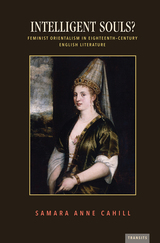 Intelligent Souls?: Feminist Orientalism in Eighteenth-Century English Literature
Samara Anne Cahill
Bucknell University Press, 2019 Intelligent Souls? offers a new understanding of Islam in eighteenth-century Britain. Cahill explores two overlapping strands of thinking about women and Islam, which produce the phenomenon of “feminist orientalism.” One strand describes seventeenth-century ideas about the nature of the soul used to denigrate religio-political opponents. A second tracks the transference of these ideas to Islam during the Glorious Revolution and the Trinitarian controversy of the 1690s. The confluence of these discourses compounded if not wholly produced the stereotype that Islam denied women intelligent souls. Surprisingly, women writers of the period accepted the stereotype, but used it for their own purposes. Rowe, Carter, Lennox, More, and Wollstonecraft, Cahill argues, established common ground with men by leveraging the “otherness” identified with Islam to dispute British culture’s assumption that British women were lacking in intelligence, selfhood, or professional abilities. When Wollstonecraft wrote A Vindication of the Rights of Woman she accepted that view as true—and “feminist orientalism” was born, introducing a fallacy about Islam to the West that persists to this day.
Published by Bucknell University Press. Distributed worldwide by Rutgers University Press.
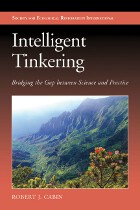 Intelligent Tinkering: Bridging the Gap between Science and Practice
Robert J. Cabin
Island Press, 2011 Intelligent Tinkering invites readers into the unpredictable, hands-on world of ecological restoration—where scientific theory meets field-tested trial and error. Drawing on his years restoring tropical dry forests in Hawai‘i, Robert J. Cabin blends personal narrative, ecological insight, and philosophical reflection to explore what really happens when you try to repair nature on the ground.
Through stories of fieldwork—chasing invasive species through rugged terrain, planting native trees in scorched soil, and navigating the tensions between academic science and real-world urgency—Cabin reveals restoration as a discipline shaped as much by judgment and adaptability as by data. He challenges the idea that success comes from following rigid prescriptions, and instead champions a more flexible, creative approach: what he calls “intelligent tinkering.”
Borrowing the term from Aldo Leopold, this mindset embraces observation, curiosity, and iteration. It recognizes the value of lived experience, local knowledge, and informal experimentation, especially when conditions are messy or unpredictable. Cabin shares examples from his own work and from other projects that show how thoughtful improvisation can lead to more resilient, responsive restoration.
Accessible and deeply honest, Intelligent Tinkering is essential reading for restorationists, land managers, and anyone working where science meets practice. It offers a fresh lens on how we repair ecosystems—by working with nature’s complexity rather than trying to control it.
Intelligent Wireless Communications
George Mastorakis
The Institution of Engineering and Technology, 2021 The incredible growth in the development and use of wireless communication technologies has led to research in both academia and industry on artificial intelligence (AI) methods that enable intelligent technologies, smarter services and applications, business processes and social interactions to satisfy future requirements. AI mechanisms are being exploited in smart intelligent network applications to provide insights from collected data by identifying patterns and allowing operational predictions with higher accuracy in smaller time periods. The future of AI-powered wireless networking infrastructures depends on finding effective solutions to a number of technical challenges that such paradigms introduce, including better intelligent sensor capabilities, smarter big data analytics, automated remote data management, as well as open and secure processes.
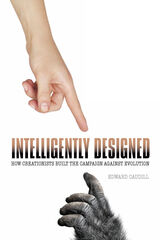 Intelligently Designed: How Creationists Built the Campaign against Evolution
Edward Caudill
University of Illinois Press, 2013 Tracing the growth of creationism in America as a political movement, this book explains why the particularly American phenomenon of anti-evolution has succeeded as a popular belief. Conceptualizing the history of creationism as a strategic public relations campaign, Edward Caudill examines why this movement has captured the imagination of the American public, from the explosive Scopes trial of 1925 to today's heated battles over public school curricula. Caudill shows how creationists have appealed to cultural values such as individual rights and admiration of the rebel spirit, thus spinning creationism as a viable, even preferable, alternative to evolution. In particular, Caudill argues that the current anti-evolution campaign follows a template created by Clarence Darrow and William Jennings Bryan, the Scopes trial's primary combatants. Their celebrity status and dexterity with the press prefigured the Moral Majority's 1980s media blitz, more recent staunchly creationist politicians such as Sarah Palin and Mike Huckabee, and creationists' savvy use of the Internet and museums to publicize their cause. Drawing from trial transcripts, media sources, films, and archival documents, Intelligently Designed highlights the importance of historical myth in popular culture, religion, and politics and situates this nearly century-old debate in American cultural history.
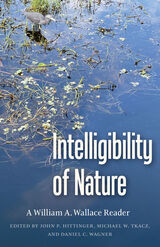 Intelligibility of Nature: A William A. Wallace Reader
William A. Wallace
Catholic University of America Press, 2022 The intelligibility of nature was a persistent theme of William A. Wallace, OP, one of the most prolific Catholic scholars of the late twentieth century. This Reader aims to make available a representative selection of his work in the history of science, natural philosophy, and theology illustrating his defense and development of this central theme. Wallace is among the most important Galileo scholars of the past fifty years and a key figure in the recent revival of scientific realism. Further, his long and productive scholarly career has been shaped by a continuous effort to bring the resources of the Aristotelian-Thomistic tradition to the solution of contemporary problems of philosophy and science. Through all of these contributions, Wallace has provided the foundation for a renewed confidence in the capacity of human knowers to attain understanding of the natural order. Consequently, the overall aim of this volume is to secure continued access to his scholarship for readers in the new millennium.
The Intelligibility of Nature will contain twenty-nine previously published essays written by Wallace over a period of some forty years. Many of these essays are currently not readily accessible. They are arranged in five thematic groups, each representing a major subject-area of Wallace's scholarly interests. The first group is devoted to essays on making nature intelligible through the use of scientific models. The second group of essays investigates various ways in which the Aristotelian-Thomistic tradition is foundational to contemporary scientific research. Essays in the third group are historical studies on the origins of modern science. The fourth group of essays discuss the viability of the cosmological argument for the existence of God in light of natural science. The final group of essays consider the relation of science and religion. Together these essays provide a representative sample of Wallace's multifaceted contributions to scholarship.
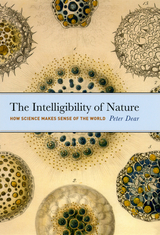 The Intelligibility of Nature: How Science Makes Sense of the World
Peter Dear
University of Chicago Press, 2006 Throughout the history of the Western world, science has possessed an extraordinary amount of authority and prestige. And while its pedestal has been jostled by numerous evolutions and revolutions, science has always managed to maintain its stronghold as the knowing enterprise that explains how the natural world works: we treat such legendary scientists as Galileo, Newton, Darwin, and Einstein with admiration and reverence because they offer profound and sustaining insight into the meaning of the universe.
In The Intelligibility of Nature, Peter Dear considers how science as such has evolved and how it has marshaled itself to make sense of the world. His intellectual journey begins with a crucial observation: that the enterprise of science is, and has been, directed toward two distinct but frequently conflated ends—doing and knowing. The ancient Greeks developed this distinction of value between craft on the one hand and understanding on the other, and according to Dear, that distinction has survived to shape attitudes toward science ever since.
Teasing out this tension between doing and knowing during key episodes in the history of science—mechanical philosophy and Newtonian gravitation, elective affinities and the chemical revolution, enlightened natural history and taxonomy, evolutionary biology, the dynamical theory of electromagnetism, and quantum theory—Dear reveals how the two principles became formalized into a single enterprise, science, that would be carried out by a new kind of person, the scientist.
Finely nuanced and elegantly conceived, The Intelligibility of Nature will be essential reading for aficionados and historians of science alike.
 The Intended and Unintended Effects of U.S. Agricultural and Biotechnology Policies
Edited by Joshua S. Graff Zivin and Jeffrey M. Perloff
University of Chicago Press, 2012 Using economic models and empirical analysis, this volume examines a wide range of agricultural and biofuel policy issues and their effects on American agricultural and related agrarian insurance markets. Beginning with a look at the distribution of funds by insurance programs—created to support farmers but often benefiting crop processors instead—the book then examines the demand for biofuel and the effects of biofuel policies on agricultural price uncertainty. Also discussed are genetically engineered crops, which are assuming an increasingly important role in arbitrating tensions between energy production, environmental protection, and the global food supply. Other contributions discuss the major effects of genetic engineering on worldwide food markets. By addressing some of the most challenging topics at the intersection of agriculture and biotechnology, this volume informs crucial debates.
Intended and Unintended Islanding of Distribution Grids
Michael Finkel
The Institution of Engineering and Technology, 2024 The transmission and distribution of electric power is based on complex interconnected power systems. Every interconnected system can split up into several subsystems due to faults, maloperation or targeted switching.
 Intensity: An Essay in Whiteheadian Ontology
Judith A. Jones
Vanderbilt University Press, 1998 A challenging, iconoclastic study that makes clear the underlying unity of Whitehead's vision of the world. This important and provocative book on the work of Alfred North Whitehead (1861-1947) explores how his avowed atomism is consistent with his equally essential commitment to a view of reality as a thoroughly interconnected sphere of relations. Judith Jones challenges Whitehead's readers to reconsider certain prevailing interpretations of his organic philosophy. To Jones, a rereading of Whitehead's overall philosophic project is essential to evaluating his contributions to metaphysics and ontology. SinceWhitehead's basic worldview is holistic, a return to viewing Whitehead's work as a whole helps clarify his ontological intentions and contributions to metaphysics. For this purpose, the concept of "intensity," which Jones defines as the quality and form of feeling involved in subjective experience, is basic to Whitehead's thinking about process at all naturalistic levels and is therefore particularly useful as a lens through which to view his entire system. "Intensity" is at once Whitehead's most basic metaphysical idea and a notion useful in deciphering the overall unity of purpose in his writings. A central aim of this book is to develop an aesthetically sensitive sense of being that demonstrates the profound and original contributions of process philosophy to realism. Jones shows that a thorough understanding of the concept of intensity yields modes of thought that help overcome knotty problems in conceiving Whitehead's distinction between the private experience of individuals and the public relations those individuals experience in relationship to other entities. Drawing frequently on poetic allusions to aid her interpretations, she focuses specifically on the status of intensity in intellectual and moral experience and develops an ethics of "attention" as an elaboration of Whitehead's aesthetic metaphysics. The result is a book that should be enthusiastically greeted and debated by scholars of Whitehead and by all who are interested in the field of process thought, including students of theology, literature, and feminist studies. Jones's unorthodox conclusions, backed up with scrupulous attention to both the Whitehead canon and related secondary literature, present challenges to accepted interpretations that cannot be ignored.
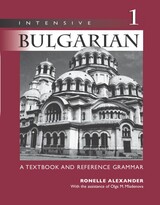 Intensive Bulgarian 1: A Textbook and Reference Grammar
Ronelle Alexander, with the assistance of Olga M. Mladenova
University of Wisconsin Press, 2000 This is the first comprehensive textbook teaching English-speakers to read, write, and speak contemporary Bulgarian. The text is designed to be adaptable for students of varying skill levels and can be taught at a gradual or intensive pace. It is also a much-needed reference grammar of Bulgarian, incorporating the latest research and theories on Bulgarian grammar in accessible layman’s language.
Volume 1 introduces the basic elements of Bulgarian grammar and contains Lessons 1–15, a Bulgarian-English glossary, an English-Bulgarian glossary for beginners, and an appendix of verbal forms. Like many popular language textbooks, the dialogues in Intensive Bulgarian form a continuing dramatic narrative that gradually introduces students to both language and culture. Throughout the text, Bulgarian constructions and phrases are compared with English ones to clarify grammar and idioms. Lessons include:
o dialogues and sample sentences
o exercises and translation sentences
o basic and supplemental grammar sections
o reading selections
o a glossary for the lesson
o cultural notes. Together, Volumes 1 and 2 of Intensive Bulgarian provide all the materials necessary for teachers and students to learn lively, modern colloquial Bulgarian, to become familiar with Bulgarian cultural life, and to thoroughly understand Bulgarian grammar. Slavic scholars will also find in Volume 2 both a thorough presentation of the Bulgarian verb system, as traditionally conceived, and a new analysis of this system.
Intensive Bulgarian 1 Audio Supplement [SPOKEN-WORD MP3]: To Accompany Intensive Bulgarian 1, a Textbook and Reference Grammar
Ronelle Alexander
University of Wisconsin Press, 2012 This audio MP3 is designed to supplement Ronelle Alexander’s Intensive Bulgarian, a two-volume textbook set that teaches students lively, modern colloquial Bulgarian, familiarizes them with Bulgarian cultural life, and thoroughly explains Bulgarian grammar. Intensive Bulgarian 1 Audio Supplement corresponds to Intensive Bulgarian 1 and Lessons 1–15, which introduce the basic elements of Bulgarian grammar. The audio tracks, spoken by native Bulgarians, present the dialogues for all lessons and supplementary materials for most lessons. Each track is introduced by a brief selection of authentic Bulgarian folk music. Each of the four items—the two volumes of the book and the two MP3 sets—is sold separately.
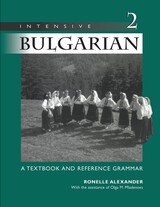 Intensive Bulgarian 2: A Textbook and Reference Grammar
Ronelle Alexander, with the assistance of Olga M. Mladenova
University of Wisconsin Press, 2000 This is the first comprehensive textbook teaching English-speakers to read, write, and speak contemporary Bulgarian. The text is designed to be adaptable for students of varying skill levels and can be taught at a gradual or intensive pace. It is also a much-needed reference grammar of Bulgarian, incorporating the latest research and theories on Bulgarian grammar in accessible layman’s language.
Volume 2 contains Lessons 16-30 and introduces more complex points of grammar and syntax than Volume 1. It also includes a cumulative Bulgarian-English glossary covering both volumes. Like many popular language textbooks, the dialogues in Intensive Bulgarian form a continuing dramatic narrative that gradually introduces students to both language and culture. Throughout the text, Bulgarian constructions and phrases are compared with English ones to clarify grammar and idioms. Lessons include:
o dialogues and sample sentences
o exercises and translation sentences
o basic and supplemental grammar sections
o reading selections
o a glossary for the lesson
o cultural notes. Together, Volumes 1 and 2 of Intensive Bulgarian provide all the materials necessary for teachers and students to learn lively, modern colloquial Bulgarian, to become familiar with Bulgarian cultural life, and to thoroughly understand Bulgarian grammar. Slavic scholars will also find in Volume 2 both a thorough presentation of the Bulgarian verb system, as traditionally conceived, and a new analysis of this system.
Intensive Bulgarian 2 Audio Supplement [SPOKEN-WORD MP3]: To Accompany Intensive Bulgarian 2, a Textbook and Reference Grammar
Ronelle Alexander
University of Wisconsin Press, 2012 This audio MP3 is designed to supplement Ronelle Alexander’s Intensive Bulgarian, a two-volume textbook set that teaches students lively, modern colloquial Bulgarian, familiarizes them with Bulgarian cultural life, and thoroughly explains Bulgarian grammar. Intensive Bulgarian 2 Audio Supplement corresponds to Intensive Bulgarian 2 and Lessons 16–30, which illustrate more complex issues of grammar and syntax. The audio tracks, spoken by native Bulgarians, present the dialogues for all lessons as well as two literary selections. Each track is introduced by a brief selection of authentic Bulgarian folk music. Each of the four items—the two volumes of the book and the two MP3 sets—is sold separately.
Intensive Care: Medical Ethics and the Medical Profession
Robert Zussman
University of Chicago Press, 1992 In riveting case studies, Robert Zussman describes how medical decisions in ICUs are considered and reconsidered, made and remade, negotiated and renegotiated. He concentrates on the practice of medical ethics, on the ways in which right and wrong are interpreted and used in the ward—how definitions of right and wrong emerge from the social situations of patients, families, doctors, and nurses and from the workings of hospitals and the courts.
His book is a portrait of the way careful planning is undermined by the unpredictability of illness and the persistence of self-interest, by high principle and curious compromise.
Intention
G. E. M. Anscombe
Harvard University Press, 2000 Intention is one of the masterworks of twentieth-century philosophy in English. First published in 1957, it has acquired the status of a modern philosophical classic. The book attempts to show in detail that the natural and widely accepted picture of what we mean by an intention gives rise to insoluble problems and must be abandoned. This is a welcome reprint of a book that continues to grow in importance.
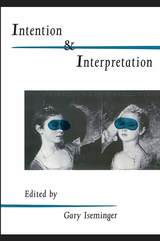 Intention Interpretation
edited by Gary Iseminger
Temple University Press, 1995 "...an excellent and comprehensive discussion of a debate that was initiated in this century in William Wimsatt's and Monroe C. Beardsley's influential article 'The Intentional Fallacy.'...this is a splendidly conceived and very useful collection of essays. Readers will want to take issue with the arguments of individual authors, but this is to be expected in a volume at the cutting edge of a fertile philosophical controversy."
--David Novitz, The Philosophical Quarterly
"What is the connection, if any, between the author's intentions in (while) writing a work of literature and the truth (acceptability, validity) of interpretive statements about it?" With this question, Gary Isminger introduces a literary debate that has been waged for the past four decades and is addressed by philosophers and literary theorists in Intention and Interpretation.
Thirteen essays discuss the role of appeals to the author's intention in interpreting works of literature. A well-known argument by E.D. Hirsch serves as the basic text, in which he defends the appeal to the author's intention against Wimsatt and Beardsley's claim that such an appeal involved "the intentional fallacy." The essays, mostly commissioned by the editor, explore the presuppositions and consequences of arguing for the importance of the author's intentions in the way Hirsch does. Connections emerge between this issue and many fundamental issues in metaphysics and the philosophy of mind as well as in aesthetics.
The (old) "New Criticism" and current Post-Structuralism tend to agree in disenfranchising the author, and many people now are disinclined even to consider the alternative. Hirsch demurs, and arguments like his deserve the careful attention, both from critics and sympathizers, that they receive here.
Literary scholars and philosophers who are sympathetic to Continental as well as to Anglo-American styles of philosophy are among the contributors.
"This is a timely book appearing as it does when postmodernist views of the death of the author are disappearing quickly from the scene. As a collection it exemplifies the best work that is being done on this problem at the moment, and it will no doubt inspire further debate."
--The Journal of Aesthetics and Art Criticism
"[T]his volume contains important articles illuminating the central debate over the role and relevance of authorial intentions in literary interoperation."
--British Journal of Aesthetics
Intention, Plans and Practical Reason
Michael E. Bratman
CSLI, 1987 Michael E. Bratman develops a planning theory of intention. Intentions are treated as elements of partial plans of action. These plans play basic roles in practical reasoning, roles that support the organization of our activities over time and socially. Bratman explores the impact of this approach on a wide range of issues, including the relation between intention and intentional action, and the distinction between intended and expected effects of what one intends.
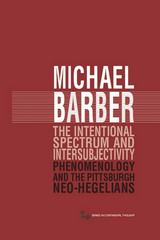 The Intentional Spectrum and Intersubjectivity: Phenomenology and the Pittsburgh Neo-Hegelians
Michael D. Barber
Ohio University Press, 2011 World-renowned analytic philosophers John McDowell and Robert Brandom, dubbed “Pittsburgh Neo-Hegelians,” recently engaged in an intriguing debate about perception. In The Intentional Spectrum and Intersubjectivity Michael D. Barber is the first to bring phenomenology to bear not just on the perspectives of McDowell or Brandom alone, but on their intersection. He argues that McDowell accounts better for the intelligibility of empirical content by defending holistically functioning, reflectively distinguishable sensory and intellectual intentional structures. He reconstructs dimensions implicit in the perception debate, favoring Brandom on knowledge’s intersubjective features that converge with the ethical characteristics of intersubjectivity Emmanuel Levinas illuminates. Phenomenology becomes the third partner in this debate between two analytic philosophers, critically mediating their discussion by unfolding the systematic interconnectionamong perception, intersubjectivity, metaphilosophy, and ethics.
Intentional Tech: Principles to Guide the Use of Educational Technology in College Teaching
Derek Bruff
West Virginia University Press, 2019 Chalkboards and projectors are familiar tools for most college faculty, but when new technologies become available, instructors aren’t always sure how to integrate them into their teaching in meaningful ways. For faculty interested in supporting student learning, determining what’s possible and what’s useful can be challenging in the changing landscape of technology. Arguing that teaching and learning goals should drive instructors’ technology use, not the other way around, Intentional Tech explores seven research-based principles for matching technology to pedagogy. Through stories of instructors who creatively and effectively use educational technology, author Derek Bruff approaches technology not by asking “How to?” but by posing a more fundamental question: “Why?”
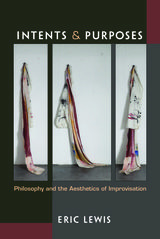 Intents and Purposes: Philosophy and the Aesthetics of Improvisation
Eric Lewis
University of Michigan Press, 2019 How do we define improvised music? What is the relationship of highly improvised performances to the work they are performances of? How do we decide what are the important parts of an improvised musical work? In Intents and Purposes, Eric Lewis uses a series of case studies to challenge assumptions about what defines a musical work and musical performance, seeking to go beyond philosophical and aesthetic templates from Western classical music to foreground the distinctive practices and aesthetics of jazz. Pushing aside the assumption that composition and improvisation are different (or even opposed) musical practices, Lewis’s philosophically informed approach revisits key topics in musical ontology, such as how to define the triangle of composer-performer-listener, and the status of live performances in relation to scores and recordings. Drawing on critical race theory, feminist theory, new musicology, sociology, cognitive science, and genre theory, Lewis opens up new questions about agency in performance, as well as new ways of considering the historical relationships between improvisational practices with roots in different cultural frameworks. By showing how jazz can be both art, idea, and action all at the same time, Lewis offers a new way of seeing any improvised musical performance in a new culturally and aesthetically rich context.
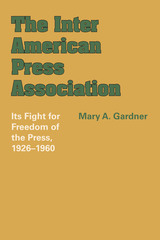 The Inter American Press Association: Its Fight for Freedom of the Press, 1926–1960
By Mary A. Gardner
University of Texas Press, 1967 The Inter American Press Association (IAPA) has been a pioneer in the concept of an inter-American professional, independent, and self-sufficient pressure group that acts on its own initiative and subsists on its own resources. This study first traces the development of IAPA from the initial meeting in 1926 through the mid-1940’s, when a small group of dedicated Latin American and United States journalists began the fight to wrest the IAPA from the control of government lackeys and Communist agents. Previously scarce accounts of the early annual meetings, often noisy and disorganized and sometimes violent, give the reader an insight into the problems and animosities faced by the democratically oriented members. Mary A. Gardner then describes a reorganization in 1950, after which IAPA actively fought for the freedom of newspaper workers tyrannized by Latin American dictators, such as Argentina’s Perón, Colombia’s Rojas Pinilla, Cuba’s Batista, and the Dominican Republic’s Trujillo. Even while IAPA was fighting for freedom of the press it began several services for its member newspapers: It set up a circulation auditing service, created a scholarship fund, undertook a newsprint study, and established a technical center. It also began the administration of the Mergenthaler Awards—prizes awarded yearly to outstanding Latin American journalists. Gardner also analyzes the merits of IAPA, basing her conclusions on data obtained from her own observations, from letters written by others long associated with operations of the organization, and from interviews with Latin American and North American journalists. She concludes that IAPA apparently surmounted the barriers of nationalism, of cultural and political differences, and of personal prejudices, thus succeeding in its attempt to unite its members in the fight for freedom of the press and for the propagation of democracy in the hemisphere.
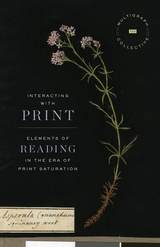 Interacting with Print: Elements of Reading in the Era of Print Saturation
The Multigraph Collective
University of Chicago Press, 2018 A thorough rethinking of a field deserves to take a shape that is in itself new. Interacting with Print delivers on this premise, reworking the history of print through a unique effort in authorial collaboration. The book itself is not a typical monograph—rather, it is a “multigraph,” the collective work of twenty-two scholars who together have assembled an alphabetically arranged tour of key concepts for the study of print culture, from Anthologies and Binding to Publicity and Taste.
Each entry builds on its term in order to resituate print and book history within a broader media ecology throughout the eighteenth and nineteenth centuries. The central theme is interactivity, in three senses: people interacting with print; print interacting with the non-print media that it has long been thought, erroneously, to have displaced; and people interacting with each other through print. The resulting book will introduce new energy to the field of print studies and lead to considerable new avenues of investigation.
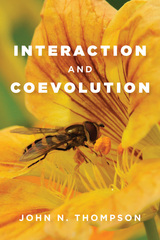 Interaction and Coevolution
John N. Thompson
University of Chicago Press, 1982 “It is not only the species that change evolutionarily through interactions . . . the interactions themselves also change.” Thus states John N. Thompson in the foreword to Interaction and Coevolution, the first title in his series of books exploring the relentless nature of evolution and the processes that shape the web of life. Originally published in 1982 more as an idea piece—an early attempt to synthesize then academically distinct but logically linked strands of ecological thought and to suggest avenues for further research—than as a data-driven monograph, Interaction and Coevolution would go on to be considered a landmark study that pointed to the beginning of a new discipline. Through chapters on antagonism, mutualism, and the effects of these interactions on populations, speciation, and community structure, Thompson seeks to explain not only how interactions differ in the selection pressures they exert on species, but also when interactions are most likely to lead to coevolution. In this era of climate change and swiftly transforming environments, the ideas Thompson puts forward in Interaction and Coevolution are more relevant than ever before.
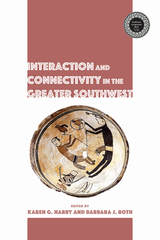 Interaction and Connectivity in the Greater Southwest
Karen Harry
University Press of Colorado, 2018 This volume of proceedings from the fourteenth biennial Southwest Symposium explores different kinds of social interaction that occurred prehistorically across the Southwest. The authors use diverse and innovative approaches and a variety of different data sets to examine the economic, social, and ideological implications of the different forms of interaction, presenting new ways to examine how social interaction and connectivity influenced cultural developments in the Southwest.
The book observes social interactions’ role in the diffusion of ideas and material culture; the way different social units, especially households, interacted within and between communities; and the importance of interaction and interconnectivity in understanding the archaeology of the Southwest’s northern periphery. Chapters demonstrate a movement away from strictly economic-driven models of social connectivity and interaction and illustrate that members of social groups lived in dynamic situations that did not always have clear-cut and unwavering boundaries. Social connectivity and interaction were often fluid, changing over time.
Interaction and Connectivity in the Greater Southwest is an impressive collection of established and up-and-coming Southwestern archaeologists collaborating to strengthen the theoretical underpinnings of the discipline. It will be of interest to professional and academic archaeologists, as well as researchers with interests in diffusion, identity, cultural transmission, borders, large-scale interaction, or social organization.
Contributors:
Richard V. N. Ahlstrom, James R. Allison, Jean H. Ballagh, Catherine M. Cameron, Richard Ciolek-Torello, John G. Douglass, Suzanne L. Eckert, Hayward H. Franklin, Patricia A. Gilman, Dennis A. Gilpin, William M. Graves, Kelley A. Hays-Gilpin, Lindsay D. Johansson, Eric Eugene Klucas, Phillip O. Leckman, Myles R. Miller, Barbara J. Mills, Matthew A. Peeples, David A. Phillips Jr., Katie Richards, Heidi Roberts, Thomas R. Rocek, Tammy Stone, Richard K. Talbot, Marc Thompson, David T. Unruh, John A. Ware, Kristina C. Wyckoff
The Interaction of Tone with Voicing and Foot Structure: Evidence from Kera Phonetics and Phonology
Mary D. Pearce
CSLI, 2013 This book investigates the topics of tone, vowel harmony, and metrical structure, with special reference to Kera, a Chadic language spoken in Chad and Cameroon. Kera is a tone language where a change in the pitch of the word can make a difference to its meaning. Drawing on a decade of experience living and working with the Kera, Mary D. Pearce looks at both the phonetics and phonology to examine how tone interacts with the vowel quality and rhythm of the language. The implications arising from this research are relevant for phonologists and Africanists far beyond the boundaries of Chad and should be useful to anyone working on languages with interesting tonal and rhythmic properties.
Interactional Morality: A Foundation for Moral Discernment in Catholic Pastoral Ministry
Mark L. Poorman, CSC
Georgetown University Press, 1993 Poorman brings together ethics and pastoral practice in an interactional model that captures the distinctive character of Christian pastoral counseling. His work is especially important in a culture that often confuses pastoral counseling with therapy. It also challenges traditional notions which portray the pastoral minister as an instructor who dispenses the church's moral teaching. Poorman distinguishes the pastoral task from that of therapist or teacher, while drawing on the best resources of contemporary psychology and moral development theories. he brings moral theology into lively conversation with pastoral experience; at the same time, his clear presentation brings a critical method of moral discernment to Christian ministry which is rooted in faith and the wisdom of the community.
 Interactions of Wind Turbines with Aviation Radio and Radar Systems
Alan Collinson
The Institution of Engineering and Technology, 2024 Wind farms and wind turbines are strong reflectors of radio waves, which can affect radar and radio systems used by civil and military aviation. The speeds of turbine blades and aircraft are comparable, and it can be difficult to discriminate between them using existing radar systems. Wind turbines may also affect communications, navigation and instrument landing systems. This situation is a brake to wind farm development slowing or stopping exploitation of many giga watts of wind capacity in many countries. Therefore, developing approaches and technologies for the mitigation of the impacts of wind farms on aviation systems is of great importance. These technologies have the potential to increase renewable energy generation and promote energy independence but, and this is critically important, they must do so without compromising safety or national defense.
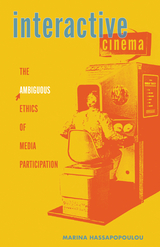 Interactive Cinema: The Ambiguous Ethics of Media Participation
Marina Hassapopoulou
University of Minnesota Press, 2024 Connecting interactive cinema to media ethics and global citizenship
Interactive Cinema explores various cinematic practices that work to transform what is often seen as a primarily receptive activity into a participatory, multimedia experience. Surveying a multitude of unorthodox approaches throughout the history of motion pictures, Marina Hassapopoulou offers insight into a range of largely ephemeral and site-specific projects that consciously assimilate viewers into their production. Analyzing examples of early cinema, Hollywood B movies, museum and gallery installations, virtual-reality experiments, and experimental web-based works, Hassapopoulou travels across numerous platforms, highlighting a diverse array of strategies that attempt to unsettle the allegedly passive spectatorship of traditional cinema. Through an exploration of these radically inventive approaches to the medium, many of which emerged out of sociopolitical crises and periods of historical transition, she works to expand notions of interactivity by considering it in both technological and phenomenological terms. Deliberately revising and expanding Eurocentric scholarship to propose a much broader, transnational scope, the book emphasizes the ethical dimensions of interactive media and their links to larger considerations around community building, citizenship, and democracy. By combining cutting-edge theory with updated conventional film studies methodologies, Interactive Cinema presses at the conceptual limits of cinema and offers an essential road map to the rapidly evolving landscape of contemporary media.
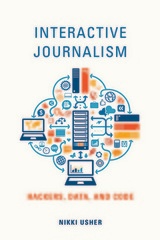 Interactive Journalism: Hackers, Data, and Code
Nikki Usher
University of Illinois Press, 2016 Interactive journalism has transformed the newsroom. Emerging out of changes in technology, culture, and economics, this new specialty uses a visual presentation of storytelling that allows users to interact with the reporting of information. Today it stands at a nexus: part of the traditional newsroom, yet still novel enough to contribute innovative practices and thinking to the industry. Nikki Usher brings together a comprehensive portrait of nothing less than a new journalistic identity. Usher provides a history of the impact of digital technology on reporting, photojournalism, graphics, and other disciplines that define interactive journalism. Her eyewitness study of the field's evolution and accomplishments ranges from the interactive creation of Al Jazeera English to the celebrated data desk at the Guardian to the New York Times' Pulitzer-endowed efforts in the new field. What emerges is an illuminating, richly reported profile of the people coding a revolution that may reverse the decline and fall of traditional journalism.
Interactive Logic: Selected Papers from the 7th Augustus de Morgan Workshop, London
Edited by Johan van Benthem, Benedikt Löwe and Dov Gabbay
Amsterdam University Press, 2007
Traditionally, logic has dealt with notions of truth and reasoning. In the past several decades, however, research focus in logic has shifted to the vast field of interactive logic—the domain of logics for both communication and interaction. The main applications of this move are logical approaches to games and social software; the wealth of these applications was the focus of the seventh Augustus de Morgan Workshop in November 2005. This collection of papers from the workshop serves as the initial volume in the new series Texts in Logics and Games—touching on research in logic, mathematics, computer science, and game theory.
“A wonderful demonstration of contemporary topics in logic.”—Wiebe van der Hoek, University of Liverpool
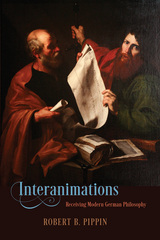 Interanimations: Receiving Modern German Philosophy
Robert B. Pippin
University of Chicago Press, 2015 In this latest book, renowned philosopher and scholar Robert B. Pippin offers the thought-provoking argument that the study of historical figures is not only an interpretation and explication of their views, but can be understood as a form of philosophy itself. In doing so, he reconceives philosophical scholarship as a kind of network of philosophical interanimations, one in which major positions in the history of philosophy, when they are themselves properly understood within their own historical context, form philosophy’s lingua franca. Examining a number of philosophers to explore the nature of this interanimation, he presents an illuminating assortment of especially thoughtful examples of historical commentary that powerfully enact philosophy.
After opening up his territory with an initial discussion of contemporary revisionist readings of Kant’s moral theory, Pippin sets his sights on his main objects of interest: Hegel and Nietzsche. Through them, however, he offers what few others could: an astonishing synthesis of an immense and diverse set of thinkers and traditions. Deploying an almost dialogical, conversational approach, he pursues patterns of thought that both shape and, importantly, connect the major traditions: neo-Aristotelian, analytic, continental, and postmodern, bringing the likes of Heidegger, Honneth, MacIntyre, McDowell, Brandom, Strauss, Williams, and Žižek—not to mention Hegel and Nietzsche— into the same philosophical conversation.
By means of these case studies, Pippin mounts an impressive argument about a relatively under discussed issue in professional philosophy—the bearing of work in the history of philosophy on philosophy itself—and thereby he argues for the controversial thesis that no strict separation between the domains is defensible.
 Interbrand Choice, Strategy, and Bilateral Market Power
Michael E. Porter
Harvard University Press, 1976 In this study of industrial organization, Michael Porter extends the field in three major areas. First, he develops a comprehensive model of the relationship between manufacturers and retailers. The model is used to test hypotheses in such important areas as how consumer products are differentiated, the effects of advertising, and the determinants of profitability in consumer goods manufacturing. Second, he proposes a new perspective for analyzing industry competition which focuses not only on the overall structure of industries but also on the strategies of individual firms within them. Third, he presents a new approach to the theory of consumer demand that emphasizes the consumer's search for information in choosing among brands and the importance of seller information outlays. Statistical tests in a wide sample of consumer goods industries support the new theories advanced here and lead to a major improvement in understanding industry performances.
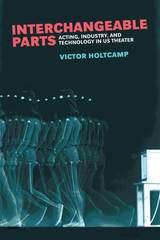 Interchangeable Parts: Acting, Industry, and Technology in US Theater
Victor Holtcamp
University of Michigan Press, 2019 While Hollywood has long been called “The Dream Factory,” and theatrical entertainment more broadly has been called “The Industry,” the significance of these names has rarely been explored. There are in fact striking overlaps between industrial rhetoric and practice and the development of theatrical and cinematic techniques for rehearsal and performance. Interchangeable Parts examines the history of acting pedagogy and performance practice in the United States, and their debts to industrial organization and philosophy. Ranging from the late nineteenth century through the end of the twentieth, the book recontextualizes the history of theatrical technique in light of the embrace of industrialization in US culture and society. Victor Holtcamp explores the invocations of scientific and industrial rhetoric and philosophy in the founding of the first schools of acting, and echoes of that rhetoric in playwriting, production, and the cinema, as Hollywood in particular embraced this industrially infected model of acting. In their divergent approaches to performance, the major US acting teachers (Lee Strasberg, Stella Adler, and Sanford Meisner) demonstrated strong rhetorical affinities for the language of industry, illustrating the pervasive presence of these industrial roots. The book narrates the story of how actors learned to learn to act, and what that process, for both stage and screen, owed to the interchangeable parts and mass production revolutions.
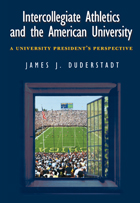 Intercollegiate Athletics and the American University: A University President's Perspective
James J. Duderstadt
University of Michigan Press, 2003 After decades of domination on campus, college sports' supremacy has begun to weaken. "Enough, already!" detractors cry. College is about learning, not chasing a ball around to the whir of TV cameras. In Intercollegiate Athletics and the American University James Duderstadt agrees, taking the view that the increased commercialization of intercollegiate athletics endangers our universities and their primary goal, academics. Calling it a "corrosive example of entertainment culture" during an interview with ESPN's Bob Ley, Duderstadt suggested that college basketball, for example, "imposes on the university an alien set of values, a culture that really is not conducive to the educational mission of university." Duderstadt is part of a growing controversy. Recently, as reported in The New York Times, an alliance between university professors and college boards of trustees formed in reaction to the growth of college sports; it's the first organization with enough clout to challenge the culture of big-time university athletics. This book is certainly part of that challenge, and is sure to influence this debate today and in the years to come. James J. Duderstadt is President Emeritus and University Professor of Science and Engineering, University of Michigan.
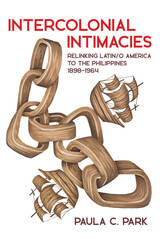 Intercolonial Intimacies: Relinking Latin/o America to the Philippines, 1898-1964
Paula C. Park
University of Pittsburgh Press, 2022 As a nation, the Philippines has a colonial history with both Spain and the United States. Its links to the Americas are longstanding and complex. Intercolonial Intimacies interrogates the legacy of the Spanish Empire and the cultural hegemony of the United States by analyzing the work of twentieth-century Filipino and Latin/o American writers and diplomats who often read one other and imagined themselves as kin. The relationships between the Philippines and the former colonies of the Spanish Empire in the Americas were strengthened throughout the twentieth century by the consolidation of a discourse of shared, even familiar, identity. This distinct inherited intercolonial bond was already disengaged from their former colonizer and further used to defy new forms of colonialism. By examining the parallels and points of contact between these Filipino and Latin American writers, Paula C. Park elaborates on the “intercolonial intimacies” that shape a transpacific understanding of coloniality and latinidad.
The Intercourse of Knowledge:On Gendering Desire and 'Sexuality' in the Hebrew Bible
Athalya Brenner
SBL Press, 2016 Now in paperback! This groundbreaking book, which builds on the author's earlier work in On Gendering Texts, studies how, by what means, and to what extent human love, desire and sex, and possibly even "sexuality"; are gendered in the Hebrew Bible. The investigation looks into the construction of male and female bodies in language and ideologies; the praxis and ideology of sex, procreation, and contraception; deviation from socio-sexual boundaries (e.g. incest, rape, adultery, homosexuality, prostitution); eroticism and "pornoprophetics." Features: - Paperback format of an essential Brill monograph
- A classification and gendering of the linguistic and semantic data
- Discussion of wider sociological and theological implications
 Intercultural and Intertextual Encounters in Michael Roes's Travel Fiction
Seiriol Dafydd
University of London Press, 2015 This book investigates a specific aspect of travel literature – the fictional travel novel – and one practitioner of that sub-genre – the contemporary German author Michael Roes (b. 1960). The analysis focuses on two main areas of research. The first concerns Roes’s representation of intercultural encounters: how does Roes conceive and present an encounter between representatives of different cultures? And what constitutes a successful encounter, if such a thing exists? The second area of interest in this study concerns Roes’s intertextual methodology. This study identifies those intertextual references that are of greatest significance and examines how and why Roes refers to other writers and their texts as he composes his own. Finally, this study identifies whether a connection exists between Roes’s engagement with interculturality in all its facets on the one hand and his utilization of intertextuality on the other. In each case the intertextual processes underpinning the novels are shown to be a vital element in the way Roes approaches questions that fascinate above all contemporary European society and dominate the media: questions regarding identity, (homo-)sexuality, race and racism, gender, and relations between the West and Islam.
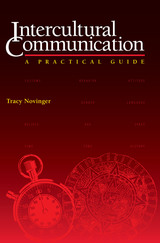 Intercultural Communication: A Practical Guide
By Tracy Novinger
University of Texas Press, 2001 Successfully communicating with people from another culture requires learning more than just their language. While fumbling a word or phrase may cause embarrassment, breaking the unspoken cultural rules that govern personal interactions can spell disaster for businesspeople, travelers, and indeed anyone who communicates across cultural boundaries. To help you avoid such damaging gaffes, Tracy Novinger has compiled this authoritative, practical guide for deciphering and following "the rules" that govern cultures, demonstrating how these rules apply to the communication issues that exist between the United States and Mexico. Novinger begins by explaining how a major proportion of communication within a culture occurs nonverbally through behavior and manners, shared attitudes, common expectations, and so on. Then, using real-life examples and anecdotes, she pinpoints the commonly occurring obstacles to communication that can arise when cultures differ in their communication techniques. She shows how these obstacles come into play in contacts between the U.S. and Mexico and demonstrates that mastering the unspoken rules of Mexican culture is a key to cementing business and social relationships. Novinger concludes with nine effective, reliable principles for successfully communicating across cultures.
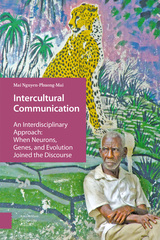 Intercultural Communication: An Interdisciplinary Approach: When Neurons, Genes, and Evolution Joined the Discourse
Mai Nguyen-Phuong-Mai
Amsterdam University Press, 2017 This book is an introduction to Intercultural Communication (IC) that takes into account the much neglected dynamic paradigm of culture in the literature. It posits that culture is not static, context is the driving force for change, and individuals can develop a multicultural mind. It is also the first IC textbook in the field that incorporates insight from evolutionary biology and the newly emerging discipline of cultural neurosciences. Such an interdisciplinary approach provides readers with new angles, encourages critical thinking, and sometimes challenges conventional knowledge in the field. The combination of the author's multicultural academic and journalistic background contributes to a balance of diverse perspectives and world views on cultural theories and discourses. The book is ideal for courses in Intercultural Communication with study cases, discussion topics and class activities.
 Intercultural Skills in Action: An International Student's Guide to College and University Life in the U.S.
Darren LaScotte and Bethany Peters
University of Michigan Press, 2021 Despite the increasing diversification of U.S. higher education, without intentional curricular planning by faculty, international students may not experience intercultural interactions due to varying degrees of disinterest, discomfort, or anxiety—and the interactions they do have may be superficial. These challenges could be potentially mitigated by an intentional curriculum that complements and enhances English language instruction, such as Intercultural Skills in Action.
Although traditional ESL/EFL textbooks have primarily introduced cultural topics at a knowledge level only, this textbook is designed to create meaningful opportunities for students to reflect on and practice intercultural skills in ways that are relatable in their daily lives and that can lead to a more satisfying U.S. academic experience.
Each unit opens with a discovery activity that serves as a springboard for the unit and introduces the topic in an engaging way. Chapters feature academic content that builds expands knowledge of intercultural skills, plus opportunities for students to pause and reflect on how to apply what they are learning to their own intercultural experiences. The activities ask students to respond with short written reflections and practice oral skills through discussion in pairs and small groups. Each unit closes with an activity that requires students to use higher-order thinking skills to create, evaluate, and/or analyze cultural information gathered from college and university settings in the form of surveys, interviews, observations, or internet research and then report on what they have learned.
The intended audiences for this book are international students studying in Intensive English Programs, in university bridge or pathway programs, or at colleges and universities in the United States. It may also be used by new-student orientation programs or by student services offices that provide intercultural training for students, staff, and faculty who work with international students.
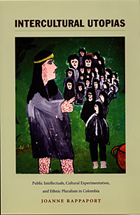 Intercultural Utopias: Public Intellectuals, Cultural Experimentation, and Ethnic Pluralism in Colombia
Joanne Rappaport
Duke University Press, 2005 Although only 2 percent of Colombia’s population identifies as indigenous, that figure belies the significance of the country’s indigenous movement. More than a quarter of the Colombian national territory belongs to indigenous groups, and 80 percent of the country’s mineral resources are located in native-owned lands. In this innovative ethnography, Joanne Rappaport draws on research she has conducted in Colombia over the past decade—and particularly on her collaborations with activists—to explore the country’s multifaceted indigenous movement, which, after almost 35 years, continues to press for rights to live as indigenous people in a pluralistic society that recognizes them as citizens. Focusing on the intellectuals involved in the movement, Rappaport traces the development of a distinctly indigenous modernity in Latin America—one that defies common stereotypes of separatism or a romantic return to the past. As she reveals, this emerging form of modernity is characterized by interethnic communication and the reframing of selectively appropriated Western research methodologies within indigenous philosophical frameworks. Intercultural Utopias centers on southwestern Colombia’s Cauca region, a culturally and linguistically heterogeneous area well known for its history of indigenous mobilization and its pluralist approach to ethnic politics. Rappaport interweaves the stories of individuals with an analysis of the history of the Regional Indigenous Council of Cauca and other indigenous organizations. She presents insights into the movement and the intercultural relationships that characterize it from the varying perspectives of regional indigenous activists, nonindigenous urban intellectuals dedicated to the fight for indigenous rights, anthropologists, local teachers, shamans, and native politicians.
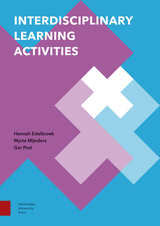 Interdisciplinary Learning Activities
Hannah Edelbroek, Myrte Mijnders, and Ger Post
Amsterdam University Press, 2018 As the complex societal and technological challenges of the 21st century cannot be addressed by solutions from just one field of expertise, academics are increasingly expected to cross the disciplinary boundaries. 'Interdisciplinary Learning Activities' contains concrete suggestions in the form of examples of learning activities that university teachers can use to teach and foster interdisciplinary skills in graduate and undergraduate students. These skills for interdisciplinary understanding include critical thinking, collaboration, and reflection.
Socratic style questioning, Breaking news, The Walt Disney strategy, and The interdisciplinary shuttle are just four examples of the 32 interdisciplinary learning activities for workshops, courses and curricula that are shared by university teachers in this handbook. Incorporating these activities into education will contribute to creating a challenging, engaging and successful learning environment.
Interdisciplining Digital Humanities: Boundary Work in an Emerging Field
Julie Thompson Klein
University of Michigan Press, 2015 Interdisciplining Digital Humanities sorts through definitions and patterns of practice over roughly sixty-five years of work, providing an overview for specialists and a general audience alike. It is the only book that tests the widespread claim that Digital Humanities is interdisciplinary. By examining the boundary work of constructing, expanding, and sustaining a new field, it depicts both the ways this new field is being situated within individual domains and dynamic cross-fertilizations that are fostering new relationships across academic boundaries. It also accounts for digital reinvigorations of “public humanities” in cultural heritage institutions of museums, archives, libraries, and community forums.
Interest Group Politics in the Southern States
Ronald J. Hrebenar
University of Alabama Press, 1992 This is the first volume comprehensively to explore the dynamics of political interest groups in the twelve southern states – the types of group, lobbyists and lobbying tactics, state regulation of lobbying activity, and the power they exert in the individual states. The authors bring a new dimension to the study of southern politics, which traditionally has emphasized electoral politics and the politics of race, and their work underscores the pivotal, and at times controlling, role played by interest groups.
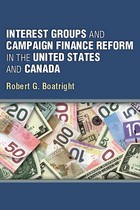 Interest Groups and Campaign Finance Reform in the United States and Canada
Robert G. Boatright
University of Michigan Press, 2011 In the early 2000s, the United States and Canada implemented new campaign finance laws restricting the ability of interest groups to make political contributions and to engage in political advertising. Whereas both nations' legislative reforms sought to reduce the role of interest groups in campaigns, these laws have had opposite results in the two nations. In the United States, interest groups remained influential by developing broad coalitions aimed at mobilizing individual voters and contributors. In Canada, interest groups largely withdrew from election campaigns, and, thus, important voices in elections have gone silent. Robert G. Boatright explains such disparate results by placing campaign finance reforms in the context of ongoing political and technological changes. Robert G. Boatright is Associate Professor of Political Science at Clark University. Cover photo: © iStockphoto.com / alfabravoalpharomeo
 Interest Groups and Health Care Reform across the United States
Virginia Gray, David Lowery, and Jennifer K. Benz
Georgetown University Press, 2013 Universal health care was on the national political agenda for nearly a hundred years until a comprehensive (but not universal) health care reform bill supported by President Obama passed in 2010. The most common explanation for the failure of past reform efforts is that special interests were continually able to block reform by lobbying lawmakers. Yet, beginning in the 1970s, accelerating with the failure of the Clinton health care plan, and continuing through the passage of the Affordable Care Act in 2010, health policy reform was alive and well at the state level. Interest Groups and Health Care Reform across the United States assesses the impact of interest groups to determine if collectively they are capable of shaping policy in their own interests or whether they influence policy only at the margins. What can this tell us about the true power of interest groups in this policy arena? The fact that state governments took action in health policy in spite of opposing interests, where the national government could not, offers a compelling puzzle that will be of special interest to scholars and students of public policy, health policy, and state politics.
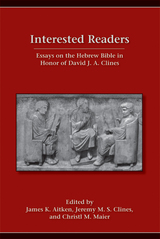 Interested Readers: Essays on the Hebrew Bible in Honor of David J.A. Clines
James K. Aitken
SBL Press, 2013 Readers of the Hebrew Bible are interested readers, bringing their own perspectives to the text. The essays in this volume, written by friends and colleagues who have drawn inspiration from and shown interest in the scholarship of David Clines, engage with his work through examining interpretations of the Hebrew Bible in areas of common exploration: literary/exegetical readings, ideological-critical readings, language and lexicography, and reception history. The contributors are James K. Aitken, Jacques Berlinerblau, Daniel Bodi, Roland Boer, Athalya Brenner, Mark G. Brett, Marc Zvi Brettler, Craig C. Broyles, Philip P. Chia, Jeremy M. S. Clines, Adrian H. W. Curtis, Katharine J. Dell, Susan E. Gillingham, Susanne Gillmayr-Bucher, Edward L. Greenstein, Mayer I. Gruber, Norman C. Habel, Alan J. Hauser, Jan Joosten, Paul J. Kissling, Barbara M. Leung Lai, Diana Lipton, Christl M. Maier, Heather A. McKay, Frank H. Polak, Jeremy Punt, Hugh S. Pyper, Deborah W. Rooke, Eep Talstra, Laurence A. Turner, Stuart Weeks, Gerald O. West, and Ian Young.
Interests and Institutions: Substance and Structure in American Politics
Robert H. Salisbury
University of Pittsburgh Press, 1992
Interest and Institutions is a collection of essays written by distinguished political scientist Robert Salsibury, a leading analyst of interest group politics. He offers his theories on the workings and influence of groups, organizations, and individuals in many different areas of American politics.
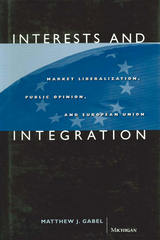 Interests and Integration: Market Liberalization, Public Opinion, and European Union
Matthew J. Gabel
University of Michigan Press, 1998 Integration in Europe has been a slow incremental process focusing largely on economic matters. Policy makers have tried to develop greater support for the European Union by such steps as creating pan-European political institutions. Yet significant opposition remains to policies such as the creation of a single currency. What explains continued support for the European Union as well as opposition among some to the loss of national control on some questions? Has the incremental process of integration and the development of institutions and symbols of a united Europe transformed public attitudes towards the European Union?
In this book, Matthew Gabel probes the attitudes of the citizens of Europe toward the European Union. He argues that differences in attitudes toward integration are grounded in the different perceptions of how economic integration will affect individuals' economic welfare and how perceptions of economic welfare effect political attitudes. Basing his argument on Easton's idea that where affective support for institutions is low, citizens will base their support for institutions on their utilitarian appraisal of how well the institutions work for them, Gabel contends that in the European Union, citizens' appraisal of the impact of the Union on their individual welfare is crucial because their affective support is quite low.
This book will be of interest to scholars studying European integration as well as scholars interested in the impact of public opinion on economic policymaking.
Matthew Gabel is Assistant Professor of Political Science, University of Kentucky.
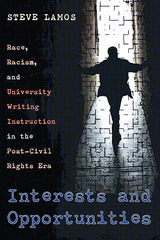 Interests and Opportunities: Race, Racism, and University Writing Instruction in the Post–Civil Rights Era
Steve Lamos
University of Pittsburgh Press, 2011
In the late 1960s, colleges and universities became deeply embroiled in issues of racial equality. To combat this, hundreds of new programs were introduced to address the needs of “high-risk” minority and low-income students. In the years since, university policies have flip-flopped between calls to address minority needs and arguments to maintain “Standard English.” Today, anti-affirmative action and anti-access sentiments have put many of these high-risk programs at risk.
In Interests and Opportunities, Steve Lamos chronicles debates over high-risk writing programs on the national level, and locally, at the University of Illinois at Urbana-Champaign. Using critical race theorist Derrick Bell’s concept of “interest convergence,” Lamos shows that these programs were promoted or derailed according to how and when they fit the interests of underrepresented minorities and mainstream whites (administrators and academics). He relates struggles over curriculum, pedagogy, and budget, and views their impact on policy changes and course offerings.
Lamos finds that during periods of convergence, disciplinary and institutional changes do occur, albeit to suit mainstream standards. In divergent times, changes are thwarted or undone, often using the same standards. To Lamos, understanding the past dynamics of convergence and divergence is key to formulating new strategies of local action and “story-changing” that can preserve and expand race-consciousness and high-risk writing instruction, even in adverse political climates.
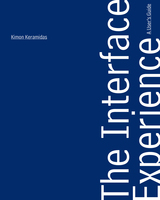 The Interface Experience: A User's Guide
Kimon Keramidas
Bard Graduate Center, 2015 The last forty years have seen the rise of the personal computer, a device that has enabled ordinary individuals to access a tool that had been exclusive to laboratories and corporate technology centers. During this time, computers have become smaller, faster, more powerful, and more complex. So much has happened with so many products, in fact, that we often take for granted the uniqueness of our experiences with different machines over time.
The Interface Experience surveys some of the landmark devices in the history of personal computing—including the Commodore 64, Apple Macintosh Plus, Palm Pilot Professional, and Microsoft Kinect—and helps us to better understand the historical shifts that have occurred with the design and material experience of each machine. With its spiral-bound design reminiscent of early computer user manuals and thorough consideration of the cultural moment represented by each device, The Interface Experience is a one-of-a-kind tour of modern computing technology.
 Interface Frictions: How Digital Debility Reshapes Our Bodies
Neta Alexander
Duke University Press, 2025 In Interface Frictions, Neta Alexander explores how ubiquitous design features in digital platforms reshape, condition, and break our bodies. She shows that while features such as refresh, playback speed, autoplay, and night mode are convenient, they can lead to “digital debility”—the slow and often invisible ways that technologies may harm human bodies. These features all assume an able-bodied user and at the same time push users to ignore their bodily limitations like the need for rest, nourishment, or movement. Building on the lived experiences of people with disabilities, Alexander explores alternative design solutions that arise from a multisensorial approach to communication. She demonstrates what can be gained from centering the nonaverage user, such as blind people who pioneered ways to control the playback speed of media, and Netflix subscribers with invisible disabilities like PTSD who successfully pushed the company to redesign its previews autoplay feature. Drawing on artworks, video games, and creative hacking by users with disabilities, Alexander challenges our understanding of media consumption, the attention economy, and the digital interface.
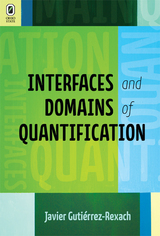 Interfaces and Domains of Quantification
Javier Gutiérrez-Rexach
Ohio State University Press, 2014 Quantification is an intrinsically complex mechanism of expression in natural language, comprising a variety of structural shapes and semantic domains whose inventory has not been completely charted to date. Several linguistic forms associated with quantification in Spanish are explored in Interfaces and Domains of Quantification by Javier Gutiérrez-Rexach, from indefiniteness and ellipsis to the quantificational properties of relative clauses and adverbial particles.
Interfaces and Domains of Quantification advocates an interface approach to the grammar of Spanish quantification. Only a precise characterization of the syntactic properties of quantificational constructions and of their associated meanings allows us to understand how more general syntactic and semantic constraints are at work. Among other findings, the interaction of scope and parallelism with ellipsis is reconsidered; the structural significance of modal anchoring and essential properties for the interpretation of indefiniteness is explored in detail; additionally, quantificational variability and correlativity phenomena in relative clauses are analyzed; degree expression is characterized for concessive conditionals and superlatives; and, finally, several discourse particles with a quantificational core are shown to be critical for the articulation of semantic and discourse-pragmatic relations. Taking a detailed look at the different forms, patterns and structures associated with several quantificational domains seems to be the only fully explanatory way to advance our knowledge of the syntax, semantics and pragmatics of quantificational structures.
 Interfaces in Microbial Ecology
K. C. Marshall
Harvard University Press, 1976 Natural microbial habitats include various interfaces--liquid-liquid, gas-liquid, solid-liquid, and solid-gas. An interface, the boundary between two phases, has physical and chemical properties that differ from those of either phase. Bacteria, yeasts, and algae often concentrate at interfaces, and the ability of microorganisms to exploit resources in their environment may be markedly affected by the nature of the available interfaces. Included within the realm of microbial activity at interfaces are such wide-ranging topics as predator-prey relations, tooth decay, gastrointestinal tract infections, mating contact, marine fouling, adsorptive bubble processes, oil degradation, rhizosphere associations, and bacterium-clay interactions.
In this book, bacteria are treated as living colloidal systems, and the behavior of microorganisms at interfaces is analyzed on the basis of this concept. Nonspecific physical and chemical forces acting on microorganisms at interfaces are described and related to biological factors determining the distribution of and interaction between microorganisms in both aquatic and terrestrial ecosystems. The final chapter describes specific microbe-microbe, microbe-plant, and microbe-animal interfacial interactions.
Although laboratory studies of cultured microorganisms are essential in assessing their potential capabilities, an individual microbial species in a natural habitat is confronted by physical, chemical, and biological interactions rarely encountered under pure culture conditions. Interfaces are important aspects of microbial ecosystems, and this study of the influence of interfaces on natural habitats is an important and original contribution to microbial ecology.
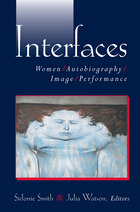 Interfaces: Women, Autobiography, Image, Performance
Sidonie Smith and Julia Watson, Editors
University of Michigan Press, 2002 Modern and contemporary women's artistic production of autobiography frequently occurs at the interfaces of image and text. The many permutations of words and images in all their modes of production--photograph, pose, invocation, written narrative, sculpture, dance, diatribe--create countless possibilities of expression, and this volume charts some of the ways in which women artists are seizing these possibilities.
Editors Sidonie Smith and Julia Watson have been at the vanguard of the study of women's self-representation, and here have collected leading critics' and scholars' thoughts on artistic fusions of the visual and autobiographical. Marianne Hirsch, Linda Hutcheon, Linda Kauffman, Nellie McKay, Marjorie Perloff, Lee Quinby, and the other contributors offer new insights into the work of such artists as Laurie Anderson, Judy Chicago, Frida Kahlo, Orlan, and Cindy Sherman. From a painter's diary to a performance artist's ritualized enactments of kitchen domesticity, the many narratives of the self arising from these artists' negotiations of the visual and textual prove to be goldmines for analysis.
Art historians, artists, critics, literary scholars in women's studies, and anyone interested in the forms and implications of depicting the self will enjoy this richly illustrated collection.
Sidonie Smith is Professor of English, University of Michigan. Julia Watson is Associate Professor of Comparative Studies, The Ohio State University. They also edited Reading Autobiography: A Guide for Interpreting Life Narratives and Women, Autobiography, Theory: A Reader.
 Interfaith Encounters in America
McCarthy, Kate
Rutgers University Press, 2007 From its most cosmopolitan urban centers to the rural Midwest, the United States is experiencing a rising tide of religious interest. While terrorist attacks keep Americans fixed on an abhorrent vision of militant Islam, popular films such as The Passion of the Christ and The Da Vinci Code make blockbuster material of the origins of Christianity. The 2004 presidential election, we are told, was decided on the basis of religiously driven moral values. A majority of Americans are reported to believe that religious differences are the biggest obstacle to world peace.
Beneath the superficial banter of the media and popular culture, however, are quieter conversations about what it means to be religious in America today—conversations among recent immigrants about how to adapt their practices to life in new land, conversations among young people who are finding new meaning in religions rejected by their parents, conversations among the religiously unaffiliated about eclectic new spiritualities encountered in magazines, book groups, or online. Interfaith Encounters in America takes a compelling look at these seldom acknowledged exchanges, showing how, despite their incompatibilities, Buddhist, Muslim, Christian, Jewish, and Hindu Americans, among others, are using their beliefs to commit to the values of a pluralistic society rather than to widen existing divisions.
Chapters survey the intellectual exchanges among scholars of philosophy, religion, and theology about how to make sense of conflicting claims, as well as the relevance and applicability of these ideas “on the ground” where real people with different religious identities intentionally unite for shared purposes that range from national public policy initiatives to small town community interfaith groups, from couples negotiating interfaith marriages to those exploring religious issues with strangers in online interfaith discussion groups.
Written in engaging and accessible prose, this book provides an important reassessment of the problems, values, and goals of contemporary religion in the United States. It is essential reading for scholars of religion, sociology, and American studies, as well as anyone who is concerned with the purported impossibility of religious pluralism.
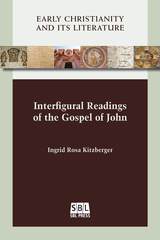 Interfigural Readings of the Gospel of John
Ingrid Rosa Kitzberger
SBL Press, 2019 New and challenging readings of biblical characters
This volume of collected essays introduces the concept of interfigurality, the interrelations and interdependence between characters in the Gospel of John and in the Synoptic Gospels and the Hebrew Bible.The essays are informed by a narrative-critical reader-response, (post)feminist hermeneutics and an autobiographical approach to biblical texts. This volume encourages transformative encounters between present-day readers and the ancient biblical texts.
Features:
- Previously unpublished conference papers and published essays
- A new perspective on the relation between New Testament and Hebrew Bible
- Foreword by Fernando F. Segovia
Ingrid Rosa Kitzberger is an independent scholar and the author of Transformative Encounters: Jesus and Women Re-viewed (1999) and the editor of The Personal Voice in Biblical Interpretation (1998) and Autobiographical Biblical Criticism: Between Text and Self (2002).
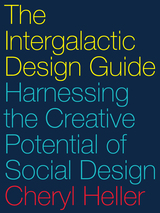 The Intergalactic Design Guide: Harnessing the Creative Potential of Social Design
Cheryl Heller
Island Press, 2018 “As homo sapiens’ entry in any intergalactic design competition, industrial civilization would be tossed out at the qualifying round.”
— David Orr, Earth in Mind
Design has built global brands, disrupted industries, and transformed our lives with technology. It has also contributed to the complex challenges we face today. In The Intergalactic Design Guide, business strategist and designer Cheryl Heller shows how social design can help address our most pressing challenges, from poverty to climate change.
Social design offers a new approach to navigate uncertainty, increase creativity, strengthen relationships, and develop our capacity to collaborate. Innovative leaders like Paul Farmer, Oprah Winfrey, and Marshall Ganz have instinctively practiced social design for decades. Heller has worked with many of these pioneers, observing patterns in their methods and translating them into an approach that can bring new creative energy to any organization. From disrupting the notion of “expert” by seeking meaningful input from many voices to guiding progress through open-ended questions instead of five-year plans, social design changes how humans relate to each other, with powerful positive impacts.
The Intergalactic Design Guide explains eleven common principles, a step-by-step process, and the essential skills for successful social design. Nine in-depth examples—from the CEO of the largest carpet manufacturer in the world to a young entrepreneur with a passion for reducing food waste—illustrate the social design process in action.
Social design is a new kind of creative leadership that generates both traditional and social value, and can change the way we all view our work. Whether you are launching a start-up or managing a global NGO, The Intergalactic Design Guide provides both inspiration and practical steps for designing a more resilient and fulfilling future.
Intergenerational Relations: European Perspectives in Family and Society
Edited by Isabelle Albert and Dieter Ferring
Bristol University Press, 2013 This book offers fresh, innovative approaches to the field of intergenerational family relations, with a particular focus on Europe. Integrating different perspectives, it brings together international scholars from sociology, psychology, and economics to explore the key conceptual issues, multigenerational and cross-cultural perspectives, and applied issues at the heart of intergenerational studies. Examining implications for research, policy, and practice, the contributors make suggestions for future directions, and in doing so make important contributions to the current discourse.
Intergovernmental Fiscal Relations
William Anderson
University of Minnesota Press, 1956
Intergovernmental Fiscal Relations was first published in 1956. Minnesota Archive Editions uses digital technology to make long-unavailable books once again accessible, and are published unaltered from the original University of Minnesota Press editions.This volume is number 8 in a series of monographs edited by William Anderson and Edward W. Weidner on intergovernmental relations in the United States as observed in the state of Minnesota. Topics discussed include: the financial problems of a federal system; Minnesota’s place and rank in the union; the financial relationship between Minnesota and the nation from 1783 to 1953; the respective financial powers of Minnesota and the nation; national and state taxes in Minnesota; federal grants-in-aid as a revenue source; the national-state fiscal balance; state-local revenue relations; and state payments to local governments.
 Intergovernmental Relations as Seen by Public Officials
Edward Weidner
University of Minnesota Press, 1960
Intergovernmental Relations as Seen by Public Officials was first published in 1960. Minnesota Archive Editions uses digital technology to make long-unavailable books once again accessible, and are published unaltered from the original University of Minnesota Press editions.This volume is number 9 in a series of monographs edited by William Anderson and Edward W. Weidner on intergovernmental relations in the United States as observed in the state of Minnesota. Topics of discussion in the report include: officials and their units of government; the increase or decrease and allocation of activities; frequency of contacts and degrees of cooperation; governmental powers and vertical and horizontal intergovernmental relations; conclusions and anticipations; the Intergovernmental Relations (IGR) Questionnaire; the Participation-Awareness-Responsibility (PAR) Categories; and methods of research.
 Intergovernmental Relations in Education
Robert Morlan
University of Minnesota Press, 1950
Intergovernmental Relations in Education was first published in 1950. Minnesota Archive Editions uses digital technology to make long-unavailable books once again accessible, and are published unaltered from the original University of Minnesota Press editions.This volume is number 3 in a series of monographs edited by William Anderson and Edward W. Weidner on intergovernmental relations in the United States as observed in the state of Minnesota. The study covers two areas, public elementary and secondary education, and higher education and special programs. The first part examines administrative and financial relationship between state and local public school agencies, vocational education, the community school lunch program, education of Indians, and libraries. The latter section includes the education of veterans, agricultural extension and experiment stations, vocational rehabilitation, and apprentice training.
Intergovernmental Relations in Public Health
Laurence Wyatt
University of Minnesota Press, 1951
Intergovernmental Relations in Public Health was first published in 1951. Minnesota Archive Editions uses digital technology to make long-unavailable books once again accessible, and are published unaltered from the original University of Minnesota Press editions.This volume is number 4 in a series of monographs edited by William Anderson and Edward W. Weidner on intergovernmental relations in the United States as observed in the state of Minnesota. Dr. Wyatt examines the United States Public Health Service, the United States Children’s Bureau, and other federal services related to public health through the study of Minnesota’s state and local health departments and allied agencies. Interstate, state-local, and inter-local relations are described throughout the analysis.
Intergovernmental Relations in Review
William Anderson
University of Minnesota Press, 1960
Intergovernmental Relations in Review was first published in 1960. Minnesota Archive Editions uses digital technology to make long-unavailable books once again accessible, and are published unaltered from the original University of Minnesota Press editions.This volume is number 10 in a series of monographs edited by William Anderson and Edward W. Weidner on intergovernmental relations in the United States as observed in the state of Minnesota. Its contents summarize the activities of the Intergovernmental Relations Project while reviewing the progress made throughout its existence. Topics discussed include: the changing scene and the American federal system; the constitutional system of national-state relations; the national government in Minnesota; metropolitan problems in national-local and inter-local relations; and the federal equilibrium and the states.
 Intergovernmental Relations in Social Welfare
Ruth Raup
University of Minnesota Press, 1952
Intergovernmental Relations in Social Welfare was first published in 1952. Minnesota Archive Editions uses digital technology to make long-unavailable books once again accessible, and are published unaltered from the original University of Minnesota Press editions.This volume is number 5 in a series of monographs edited by William Anderson and Edward W. Weidner on intergovernmental relations in the United States as observed in the state of Minnesota. Topics of discussion in the report include: an introduction to intergovernmental welfare programs in Minnesota and their administrative organization; comparisons of these programs with other states; supervisory and non-supervisory relationships between national, state, and local government welfare agencies in the administration of public assistance and child welfare services; problems of grant allocation and integration; and problems of inter-state and inter-county relations arising in administration of settlement requirements.
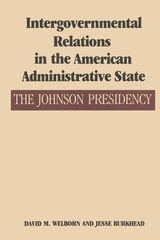 Intergovernmental Relations in the American Administrative State: The Johnson Presidency
By David M. Welborn and Jesse Burkhead
University of Texas Press, 1989 During the 1960s, President Lyndon Johnson and his administration substantially altered the structure of the American administrative state. Creating intergovernmental programs to forward the goal of the Great Society, they changed the contours of national-state-local relationships, and these changes largely have remained, despite the attempts of later administrations to reverse them. Intergovernmental Relations in the American Administrative State is the first comprehensive study of how and why these changes occurred. Drawn from a wealth of primary material in the Lyndon Baines Johnson Library, the study probes the objectives of the president and other framers of new policies and programs, within the institutional and political context of the time. The authors give special attention to the inherent incongruities that arise when intergovernmental programs are used to address problems defined in national terms. In addition, they reveal how certain programs actually challenged the power of established national bureaucracies. They conclude with a thoughtful overview of the Johnson legacy in intergovernmental relations during subsequent administrations.
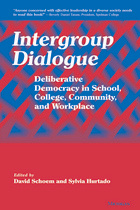 Intergroup Dialogue: Deliberative Democracy in School, College, Community, and Workplace
David Schoem and Sylvia Hurtado, Editors
University of Michigan Press, 2001 Intergroup dialogue represents a grassroots effort to meet one of the major challenges facing our democracy today: the lack of communication among diverse groups of people in schools, in communities, and in the workplace. By forging lines of communication among different elements of society, intergroup dialogue helps to create a more just, harmonious, and strong democracy.
Intergroup Dialogue is the most comprehensive study of intergroup dialogue to date, showcasing twelve in-depth case studies, offering critical perspectives, and exploring the foundation of such dialogue in democratic theory. The case studies are drawn from leading American organizations offering intergroup dialogue, including the Anti-Defamation League and the National Conference for Community and Justice, as well as several major universities and consultants to corporate America. Each case study presents a particular program's rationale, its details, an account of its successes, and evaluation data.
The pieces collected by David Schoem and Sylvia Hurtado will be of interest to community leaders, teachers, human resources managers, student affairs deans, and intergroup dialogue practitioners in the United States and abroad; particularly as the 2024 presidential election draws near.
 Interim Leadership in Libraries: Building Relationships, Making Decisions, and Moving On
Jennifer E. Knievel
American Library Association, 2022 It’s common for libraries to use visiting, interim, temporary, and acting roles to solve a variety of personnel vacancies. And with the current, widespread retirements and turnover at the most senior levels of library leadership, more and more libraries are being led by interim leaders. Interim Leadership in Libraries: Building Relationships, Making Decisions, and Moving On draws on evidence-based research, professional expertise, and personal experience to address the practical implications that arise from the decision to appoint interim leaders. Authors from a variety of institutions who have served in many different interim roles explore this unique type of leadership in five thorough sections: - Building Relationships for Interim Leaders
- Leading with Confidence
- Making Long-Term Decisions as an Interim Leader
- Leading Through Contraction: When No One Can Be Hired
- Moving On: When the Dust Settles
Chapters cover topics including serving as a non-librarian interim, leading through a hiring freeze, strategic planning and reorganization as interim, and developing future library leaders. Individuals asked to step into interim or acting leadership roles face personal and professional challenges. This book will help leaders, and those who work with them, learn from the successes and failures of others who came before them in order to have a lasting impact on their organization.
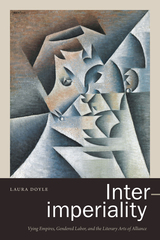 Inter-imperiality: Vying Empires, Gendered Labor, and the Literary Arts of Alliance
Laura Doyle
Duke University Press, 2020 In Inter-imperiality Laura Doyle theorizes the co-emergence of empires, institutions, language regimes, stratified economies, and literary cultures over the longue durée. Weaving together feminist, decolonial, and dialectical theory, she shows how inter-imperial competition has generated a systemic stratification of gendered, racialized labor, while literary and other arts have helped both to constitute and to challenge this world order. To study literature is therefore, Doyle argues, to attend to world-historical processes of imaginative and material co-formation as they have unfolded through successive eras of vying empires. It is also to understand oral, performed, and written literatures as power-transforming resources for the present and future. To make this case, Doyle analyzes imperial-economic processes across centuries and continents in tandem with inter-imperially entangled literatures, from A Thousand and One Nights to recent Caribbean fiction. Her trenchant interdisciplinary method reveals the structural centrality of imaginative literature in the politics and possibilities of earthly life.
 Interior Femme: Poems
Stephanie Berger
University of Nevada Press, 2022 In her debut collection, Stephanie Berger cracks the earth open and exposes the “woman inside.” In a sequence of poems that present variations on the Western feminine archetype, Interior Femme visits many unique locales, from cemeteries in Brooklyn to canyons in New Mexico to churches in San Diego, Paris, and Peru. Berger approaches her subjects—mothers, goddesses, whores, daughters, muses, and movie stars—from multiple angles, and through her poems she reveals historical, personal, social, environmental, and artistic viewpoints.
The poems offer layered perspectives fused with multiple versions of female representation, as if to underscore the burden of responsibility, inherited shame, and awesome power that comes with the position women have occupied throughout history. Berger reveals a woman critically wounded—representing the totality of the Western feminine imaginary. Lyrically complex, sometimes surreal, and often ekphrastic in style and content, Interior Femme simultaneously offers heartbreak, laughter, comfort, and empowerment.
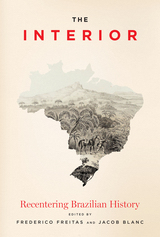 The Interior: Recentering Brazilian History
Frederico Freitas and Jacob Blanc
University of Texas Press, 2024 A new history of Brazil told through the lens of the often-overlooked interior regions. In colonial Brazil, observers frequently complained that Portuguese settlers appeared content to remain “clinging to the coastline, like crabs.” From their perspective, the vast Brazilian interior seemed like an untapped expanse waiting to be explored and colonized. This divide between a thriving coastal area and a less-developed hinterland has become deeply ingrained in the nation’s collective imagination, perpetuating the notion of the interior as a homogeneous, stagnant periphery awaiting the dynamic influence of coastal Brazil. The Interior challenges these narratives and reexamines the history of Brazil using an “interior history” perspective. This approach aims to reverse the conventional conceptual and geographical boundaries often employed to study Brazilian history, and, by extension, Latin America as a whole. Through the work of twelve leading scholars, the volume highlights how the people and spaces within the interior have played a pivotal role in shaping national identities, politics, the economy, and culture. The Interior goes beyond the traditional boundaries of borderland and frontier history, expands on the current wave of scholarship on regionalism in Brazil, and, by asking new questions about space and nation, provides a fresh perspective on Brazil’s history.
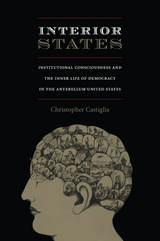 Interior States: Institutional Consciousness and the Inner Life of Democracy in the Antebellum United States
Christopher Castiglia
Duke University Press, 2008 In Interior States Christopher Castiglia focuses on U.S. citizens’ democratic impulse: their ability to work with others to imagine genuinely democratic publics while taking divergent views into account. Castiglia contends that citizens of the early United States were encouraged to locate this social impulse not in associations with others but in the turbulent and conflicted interiors of their own bodies. He describes how the human interior—with its battles between appetite and restraint, desire and deferral—became a displacement of the divided sociality of nineteenth-century America’s public sphere and contributed to the vanishing of that sphere in the twentieth century and the twenty-first. Drawing insightful connections between political structures, social relations, and cultural forms, he explains that as the interior came to reflect the ideological conflicts of the social world, citizens were encouraged to (mis)understand vigilant self-scrutiny and self-management as effective democratic action. In the late eighteenth century and early nineteenth, as discourses of interiority gained prominence, so did powerful counter-narratives. Castiglia reveals the flamboyant pages of antebellum popular fiction to be an archive of unruly democratic aspirations. Through close readings of works by Maria Monk and George Lippard, Walt Whitman and Timothy Shay Arthur, Hannah Webster Foster and Hannah Crafts, and Nathaniel Hawthorne and Herman Melville, Castiglia highlights a refusal to be reformed or self-contained. In antebellum authors’ representations of nervousness, desire, appetite, fantasy, and imagination, he finds democratic strivings that refused to disappear. Taking inspiration from those writers and turning to the present, Castiglia advocates a humanism-without-humans that, denied the adjudicative power of interiority, promises to release democracy from its inner life and to return it to the public sphere where U.S. citizens may yet create unprecedented possibilities for social action.
 The Interior West: A Fire Survey
Stephen J. Pyne
University of Arizona Press, 2018 Its fires help to give the Interior West a peculiar character, fundamental to its natural and human histories. While a general aridity unites the region—defined here as Nevada, Utah, and western Colorado—its fires illuminate the ways that the region’s various parts show profoundly different landscapes, biotas, and human settlement experiences. In this collection of essays, fire historian Stephen J. Pyne explains the relevance of the Interior West to the national fire scene. This region offered the first scientific inquiry into landscape fire in the United States, including a map of Utah burns published in 1878 as part of John Wesley Powell’s Arid Lands report. Then its significance faded, and for most of the 20th century, the Interior West was the hole in the national donut of fire management. Recently the region has returned to prominence due to fires along its front ranges; invasive species, both exotics like cheatgrass and unleashed natives like mountain pine beetle; and fatality fires, notably at South Canyon in 1994. The Interior West has long been passed over in national fire narratives. Here it reclaims its rightful place. Included in this volume: - A summary of 19th- and 20th-century fire history in the Interior West
- How this important region inspired U.S. studies of landscape fire
- Why the region disappeared from national fire management discussions
- How the expansion of invasive species and loss of native species has affected the region’s fire ecology
- The national significance of fire in the Interior West
 Interiority in German Women's Writing
Amy Emm
University of Delaware Press, 2026 Interiority in German Women’s Writing for the first time systematically gathers and engages with contributions of German woman authors to the discourse on interiority ("Innerlichkeit") from 1750 to 1850. This volume shifts the recent focus on abstract theoretical and medical discourses on inwardness to the origins of interiority in literature and philosophy as written and experienced by women from the Age of Sensibility ("Empfindsamkeit") to the Romantic era. At the same time, it makes a claim for and explores the ramifications of understanding interiority as a feminine discourse. Contributors investigate the works of women authors who searched to find rescue from their cultural and personal entrapment via creative spaces and various modes of interiority in theatrical performances, poetic writings, letters, biographical narratives, prose, and fairy tales. From the case studies and literary analyses in the volume, interiority emerges as a spectrum of approaches to defining, resisting, and transforming the innermost self.
Interlacing Words and Things: Bridging the Nature–Culture Opposition in Gardens and Landscape
Stephen Bann
Harvard University Press, 2012 Interlacing Words and Things: Bridging the Nature–Culture Opposition in Gardens and Landscape examines the various ways in which the natural world has been transformed through the creative use of language. The nine contributors do not assume that there is an opposition between nature and culture, but rather emphasize that forms of language are embedded in our understanding and appreciation of the natural environment. Their illustrated essays consider the relationship between language and the natural world, as it has been mediated in different cultures and at different periods by broad notions such as landscape and the garden. Complementing the richness of the examples covered in the volume is the message that writing must still be integrally involved in the creative remaking of the natural world.
 Interlingual Relations: Global Politics in a Polyglot World
Mauro J. Caraccioli and Einar Wigen, Editors.
University of Michigan Press, 2026 International politics is often conducted in two languages or more, and since no two languages are exactly the same, what is possible to say in one language may be impossible to say in another. Translation is at the heart of global politics, and interlingual relations traverse time, space, culture, and state borders. Interlingual Relations builds on emergent literature on translation in International Relations (IR) to propose a unique research agenda for scholars of global politics, offering multiple directions and sets of principles for sustained study.
The contributors use various methodologies to explore these interfaces and encounters in different sites, bringing together multiple subfields, approaches, and disciplinary paradigms across IR’s history. Together they offer a more truly global perspective on international affairs, going beyond the hegemony of English to demonstrate the interconnectedness between “high” politics and everyday life. They show the role of translation in global politics as one of world-making, whereby social roles, rules, and responsibilities establish the semblance of order despite not sounding or meaning the same to all actors. In establishing Interlingual Relations as a foundational part of IR, the book offers another key to studying global interactions and the high political stakes in the theories, methods, and ethics of translation.
 Interlochen: A Home for the Arts
Dean Boal
University of Michigan Press, 1998 Tucked away in the northern woods of Michigan is one of the world's most renowned schools for the arts. Conceived initially as a small summer camp for talented high school musicians, Interlochen Center for the Arts now ranks among the most respected schools in the world.In Interlochen: A Home for the Arts, Dean Boal, President of Interlochen from 1989 to 1995, presents a richly detailed and never-before-told story of Interlochen's struggles with artistic stresses, financial woes, and internal problems. This thoroughly researched presentation based on documents from the Bentley Historical Library, Interlochen archives, and many interviews offers an in-depth view of the school from its modest beginnings under Joseph Maddy to the present. Boal decribes the critical Supreme Court battle with the musicians' union, when James Petrillo banned national radio broadcasts and all professional musicians from Interlochen. He shows how the University of Michigan rescued Interlochen during this period and stabilized the institution for the opening of the Interlochen Arts Academy and a public radio station. He chronicles the few stormy years of the presidency of Karl Haas, an acclaimed broadcaster. The story of Interlochen is enriched by archival photographs of the founders, artists, and students, complementing this engaging story of a Michigan gem.
 Interloper: Poems
L. S. Klatt
University of Massachusetts Press, 2009 In the United States, where much of the daily discourse appears to be reduced to matters of dollars and cents, the poet is an interloper who traffics where he doesn't belong. L. S. Klatt is vividly aware of this phenomenon. For him, words are musical and versatile, more about play than utility, and he seeks to dislocate language, to freelance and maneuver, to alter common sense on the way to new sense.
The poems in Interloper unsettle frontiers between disparate worlds so that the imagination is given room to roam: pears become guitars, racks of ribs are presented as steamboats, and helicopters transmute into diesel seraphs. The poetry aspires acrobatically in the manner of prayers and pilots, but adventure throughout the book is viewed as precarious and the will to conquest leads to apocalypse and ruin. The interloper wanders through crime scenes and crash sites as he glosses the landscape—at home and not at home with the America of yesterday and tomorrow. In symbols that scat and ricochet, the interloper scores a new song, one that composes—and decomposes—on the page.
 Intermedialities: Political Theory and Cinematic Experience
Davide Panagia
Northwestern University Press, 2024 Understanding democracy through film philosophy and political theory
Shining new light on our understanding of cinema’s ways of political thinking, Intermedialities: Political Theory and Cinematic Experience puts modern political theory in conversation with the philosophy of film. Davide Panagia argues that there are no natural laws of association that can guarantee a template for democratic participation, as democracy is predicated not on stabilizing foundations but rather on the formation of expansive collectivities and institutions that are responsive to alterability. Instead, democracy requires a relational ontology, one that he elucidates by turning to philosophers of film like Stanley Cavell, Gilles Deleuze, Miriam Hansen, and Jean-Luc Godard—all of whom have articulated a political aesthetic of cinematic experience that is at once aspectual and compositional. Panagia reads these thinkers alongside a countertradition of modern political thought, represented by David Hume, Ludwig Wittgenstein, and Gilbert Simondon. His articulation of cinematic experience thus allows for a political aesthetic that is rooted in the migratory realities of undetermined relations.
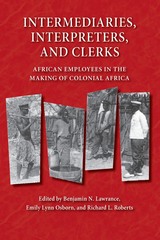 Intermediaries, Interpreters, and Clerks: African Employees in the Making of Colonial Africa
Edited by Benjamin N. Lawrance, Emily Lynn Osborn, and Richard L. Roberts
University of Wisconsin Press, 2006 As a young man in South Africa, Nelson Mandela aspired to be an interpreter or clerk, noting in his autobiography that “a career as a civil servant was a glittering prize for an African.” Africans in the lower echelons of colonial bureaucracy often held positions of little official authority, but in practice these positions were lynchpins of colonial rule. As the primary intermediaries among European colonial officials, African chiefs, and subject populations, these civil servants could manipulate the intersections of power, authority, and knowledge at the center of colonial society.
By uncovering the role of such men (and a few women) in the construction, function, and legal apparatus of colonial states, the essays in this volume highlight a new perspective. They offer important insights on hegemony, collaboration, and resistance, structures and changes in colonial rule, the role of language and education, the production of knowledge and expertise in colonial settings, and the impact of colonization in dividing African societies by gender, race, status, and class.
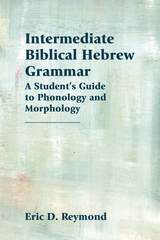 Intermediate Biblical Hebrew Grammar: A Student's Guide to Phonology and Morphology
Eric D. Reymond
SBL Press, 2018 A unique grammar for intermediate or advanced students of Hebrew
This grammar is intended for students of Hebrew who wish to learn more about the history of the Hebrew language, specifically its phonology and morphology. Reymond focuses on aspects of Hebrew that will encourage a student to better remember the words and their inflection as well as those that will reinforce general principles of the language. Specific examples for memorization are outlined at the end of each chapter. The book also serves as a resource for students wishing to remind themselves of the relative frequency of certain phenomena. The book provides students with a full picture of the language's morphology.
Features:
- Tables of nouns and adjectives illustrating the absolute and construct, singular and plural forms, as well as all the forms with suffixes
- Tables include forms not found in the Masoretic Text
- Additional tables that set similar verbal inflections side by side
Intermediate Conversational Sign Language
Willard J Madsen
Gallaudet University Press, 1982 This fully illustrated text offers a unique approach to using American Sign Language (ASL) and English in a bilingual setting. Each of the 25 lessons involve sign language conversation using colloquialisms that are prevalent in informal conversations. Each lesson includes equivalent expressions in English, plus: - Glossed Vocabulary Review
- Translation Exercises from ASL to English to ASL
- Grammatical Notes
- Substitution Drills
- Suggested Activities
The text also includes practice tests, a bibliography, and a glossed alphabetical index.
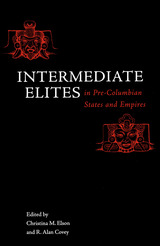 Intermediate Elites in Pre-Columbian States and Empires
Edited by Christina M. Elson and R. Alan Covey
University of Arizona Press, 2006 From the Mesoamerican highlands to the Colca Valley in Peru, pre-Columbian civilizations were bastions of power that have largely been viewed through the lens of rulership, or occasionally through bottom-up perspectives of resistance. Rather than focusing on rulers or peasants, this book examines how intermediate elites—both men and women—helped to develop, sustain, and resist state policies and institutions. Employing new archaeological and ethnohistorical data, its contributors trace a 2,000-year trajectory of elite social evolution in the Zapotec, Wari, Aztec, Inka, and Maya civilizations.
This is the first volume to consider how individuals subordinate to imperial rulers helped to shape specific forms of state and imperial organization. Taking a broader scope than previous studies, it is one of the few works to systematically address these issues in both Mesoamerica and the Central Andes. It considers how these individuals influenced the long-term development of the largest civilizations of the ancient Americas, opening a new window on the role of intermediate elites in the rise and fall of ancient states and empires worldwide.
The authors demonstrate how such evidence as settlement patterns, architecture, decorative items, and burial patterns reflect the roles of intermediate elites in their respective societies, arguing that they were influential actors whose interests were highly significant in shaping the specific forms of state and imperial organization. Their emphasis on provincial elites particularly shifts examination of early states away from royal capitals and imperial courts, explaining how local elites and royal bureaucrats had significant impact on the development and organization of premodern states.
Together, these papers demonstrate that intricate networks of intermediate elites bound these ancient societies together—and that competition between individuals and groups contributed to their decline and eventual collapse. By addressing current theoretical concerns with agency, resistance to state domination, and the co-option of local leadership by imperial administrators, it offers valuable new insight into the utility of studying intermediate elites.
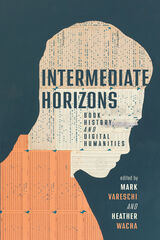 Intermediate Horizons: Book History and Digital Humanities
Edited by Mark Vareschi and Heather Wacha
University of Wisconsin Press, 2024 This innovative collection examines how book history and digital humanities (DH) practices are integrated through approach, access, and assessment. Eight essays by rising and senior scholars practicing in multiple fields—including librarians, literature scholars, digital humanists, and historians—consider and reimagine the interconnected futures and horizons at the intersections of texts, technology, and culture and argue for a return to a more representative and human study of the humanities.
Integrating intermedial practices and assessments, the editors and contributors explore issues surrounding the access to and materiality of digitized materials, and the challenge of balancing preservation of traditional archival materials with access. They offer an assessment in our present moment of the early visions of book history and DH projects. In revisiting these projects, they ask us to shift our thinking on the promises and perils of archival and creative work in different media. Taken together, this volume reconsiders the historical intersections of book history and DH and charts a path for future scholarship across disciplinary boundaries.
 Intermediate Spanish Memory Book: A New Approach to Vocabulary Building
By William F. Harrison and Dorothy Winters Welker
University of Texas Press, 1997 Mnemonics is an age-old device for remembering names, numbers, and many other things. As in the authors' previous Memory Books, the Intermediate Spanish Memory Book makes use of this reliable memory help in a series of mnemonic jingles that are by turns playful, sardonic, touching, and heroic to help both students and independent learners acquire and remember Spanish vocabulary. The 500-plus words in this book represent a more advanced vocabulary than those in the Spanish Memory Book (1990) and the Spanish Memory Book, Junior Edition (1993). The mnemonic jingles present both the sound of the Spanish word (indicated by syllables in italic type) and its English meaning (given by a word or phrase in boldface type): merienda: picnic, afternoon tea Mary, end a boring picnic.
Just say, "I'm going home. I'm sick, Nick." This innovative approach to vocabulary building is simple, effective, and entertaining.
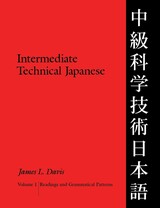 Intermediate Technical Japanese, Volume 1: Readings and Grammatical Patterns
James L. Davis
University of Wisconsin Press, 2002 Learn how to read and translate technical manuals, research publications, and reference works. This two-volume set is designed to help the intermediate-level learner of Japanese build a technical vocabulary, reinforce understanding of frequently used grammatical patterns, improve reading comprehension, and practice translating technical passages. The glossary in volume 2 clarifies words and phrases that often puzzle beginning readers.
The sample readings on technical topics are drawn from a broad range of specialties, from mathematics and computer science to electronics and polymer science. The initial grammar lesson and the first nine field-specific lessons constitute the common core to be used by all instructors or students. Topics of interest from the remaining thirty-one field-specific lessons may be selected to produce a customized course of study. Intermediate Technical Japanese is designed to fulfill a typical two-semester sequence.
Volume 1 contains:
o information about 600 key kanji
o explanations of 100 important grammatical patterns
o more than 700 scientific or technical essays
o an index of the grammatical patterns. Volume 2 contains:
o a complete glossary
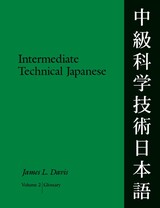 Intermediate Technical Japanese, Volume 2: Glossary
James L. Davis
University of Wisconsin Press, 2002 Learn how to read and translate technical manuals, research publications, and reference works. This two-volume set is designed to help the intermediate-level learner of Japanese build a technical vocabulary, reinforce understanding of frequently used grammatical patterns, improve reading comprehension, and practice translating technical passages. The glossary in volume 2 clarifies words and phrases that often puzzle beginning readers.
The sample readings on technical topics are drawn from a broad range of specialties, from mathematics and computer science to electronics and polymer science. The initial grammar lesson and the first nine field-specific lessons constitute the common core to be used by all instructors or students. Topics of interest from the remaining thirty-one field-specific lessons may be selected to produce a customized course of study. Intermediate Technical Japanese is designed to fulfill a typical two-semester sequence.
Volume 1 contains:
o information about 600 key kanji
o explanations of 100 important grammatical patterns
o more than 700 scientific or technical essays
o an index of the grammatical patterns. Volume 2 contains:
o a complete glossary
Intermittences: Memory, Justice, and the Poetics of the Visible in Uruguay
Ana Forcinito
University of Pittsburgh Press, 2018 The construction of memory entails a battle not only between memory and forgetting but also between different memories. There are multiple constructions of memory, and in the dispute between them, some become hegemonic, while others remain in the margins. Ana Forcinito explores the intermittences of transitional justice and memory in post-dictatorship Uruguay. The processes of building memory and transitional justice are repetitive but inconstant. They are contested by both internal and external forces and shaped by tensions between oblivion and silence. Forcinito explores models of reconciliation to present an alternative narrative of the past and to expose the blind spots of memory.
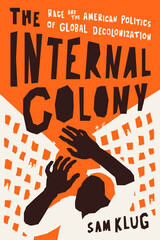 The Internal Colony: Race and the American Politics of Global Decolonization
Sam Klug
University of Chicago Press, 2025 An explication of how global decolonization provoked profound changes in American political theory and practice.
In The Internal Colony, Sam Klug reveals the central but underappreciated importance of global decolonization to the divergence between mainstream liberalism and the Black freedom movement in postwar America. Klug reconsiders what has long been seen as a matter of primarily domestic policy in light of a series of debates concerning self-determination, postcolonial economic development, and the meanings of colonialism and decolonization. These debates deeply influenced the discord between Black activists and state policymakers and formed a crucial dividing line in national politics in the 1960s and 1970s.
The result is a history that broadens our understanding of ideological formation—particularly how Americans conceptualized racial power and political economy—by revealing a much wider and more dynamic network of influences. Linking intellectual, political, and social movement history, The Internal Colony illuminates how global decolonization transformed the terms of debate over race and social class in the twentieth-century United States.
Internal Evidence and Elizabethan Dramatic Authorship: An Essay in Literary History and Method
S. Schoenbaum
Northwestern University Press, 1966 Internal Evidence and Elizabethan Dramatic Authorship provides one the earliest attempts to write a theoretical method for evidence within plays to help determine authorship or to help distinguish the work of one author from another. Samuel Schoenbaum’s study remains valuable, for the attempt to attribute unattributed plays to one or another author remains an ongoing conversation within early modern scholarship today.
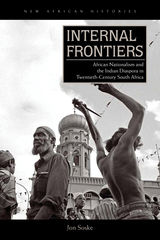 Internal Frontiers: African Nationalism and the Indian Diaspora in Twentieth-Century South Africa
Jon Soske
Ohio University Press, 2017 In this ambitious new history of the antiapartheid struggle, Jon Soske places India and the Indian diaspora at the center of the African National Congress’s development of an inclusive philosophy of nationalism. In so doing, Soske combines intellectual, political, religious, urban, and gender history to tell a story that is global in reach while remaining grounded in the everyday materiality of life under apartheid. Even as Indian independence provided black South African intellectuals with new models of conceptualizing sovereignty, debates over the place of the Indian diaspora in Africa (the “also-colonized other”) forced a reconsideration of the nation’s internal and external boundaries. In response to the traumas of Partition and the 1949 Durban Riots, a group of thinkers in the ANC, centered in the Indian Ocean city of Durban and led by ANC president and Nobel Peace Prize winner Albert Luthuli, developed a new philosophy of nationhood that affirmed South Africa’s simultaneously heterogeneous and fundamentally African character. Internal Frontiers is a major contribution to postcolonial and Indian Ocean studies and charts new ways of writing about African nationalism.
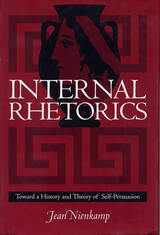 Internal Rhetorics: Toward a History and Theory of Self-Persuasion
Jean Nienkamp
Southern Illinois University Press, 2001 Since its early history in Greek culture, traditional rhetorical study has focused primarily on persuasive language used in the public sphere. There has been little study, however, of what Jean Nienkamp calls internal rhetoric, which “occurs between one aspect of the self and another” inside one’s mind. Nienkamp opens the study of internal rhetoric by discussing how the concept developed alongside traditional classical and modern rhetorical theory. Nienkamp shows how we talk to ourselves, or more specifically, how we talk ourselves into things: justifications, actions, opinions, theories. She explains that just because we see ourselves as divided, as torn in different directions by conflicting desires, duties, and social mores, it does not mean that we are fragmented, nor does it mean that we are split into discrete identities that neither interrelate nor interact. In this groundbreaking study, Nienkamp identifies two major aspects of internal rhetoric: “the conscious ‘art’ of cultivated internal rhetoric” and “the unconscious ‘nature’ of primary internal rhetoric.” Selecting a small number of figures from the history of rhetoric—including Isocrates, Plato, Aristotle, Francis Bacon, Lord Shaftesbury, Richard Whately, Kenneth Burke, Chaim Perelman and Lucie Olbrechts-Tyteca, George Herbert Mead, and Lev Vygotsky—Nienkamp argues for a “version of the rhetorical self that takes into account both the ways we are formed by and formulate internal and external rhetorics and the ways our physical bodies act as a contributing scene—an agora—for internal rhetoric.”
 Internal Time: Chronotypes, Social Jet Lag, and Why You're So Tired
Till Roenneberg
Harvard University Press, 2012 Winner of a British Medical Association Book Award
A Brain Pickings Best Science Book of the Year
Early birds and night owls are born, not made. Sleep patterns may be the most obvious manifestation of the highly individualized biological clocks we inherit, but these clocks also regulate bodily functions from digestion to hormone levels to cognition. Living at odds with our internal timepieces, Till Roenneberg shows, can make us chronically sleep deprived and more likely to smoke, gain weight, feel depressed, fall ill, and fail geometry. By understanding and respecting our internal time, we can live better.
“Internal Time is a cautionary tale—actually a series of 24 tales, not coincidentally. Roenneberg ranges widely from the inner workings of biological rhythms to their social implications, illuminating each scientific tutorial with an anecdote inspired by clinical research...Written with grace and good humor, Internal Time is a serious work of science incorporating the latest research in chronobiology...[A] compelling volume.”
—A. Roger Ekirch, Wall Street Journal
“This is a fascinating introduction to an important topic, which will appeal to anyone who wishes to delve deep into the world of chronobiology, or simply wonders why they struggle to get a good night’s sleep.”
—Richard Wiseman, New Scientist
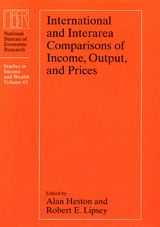 International and Interarea Comparisons of Income, Output, and Prices
Edited by Alan Heston and Robert E. Lipsey
University of Chicago Press, 1999 Economists wish to compare prices, real income, and output across countries and regions for many purposes. In the past, such comparisons were made in nominal terms, or by using exchange rates across countries, ignoring differences in price levels and thus distorting the results. Great progress has been made in interspatial comparisons in the past thirty years, but descriptions and discussions of the new measures have been scattered in unpublished or inaccessible papers.
International and Interarea Comparisons of Income, Output, and Prices includes discussions of developments in the United Nations International Comparison Program, the largest effort in this field, and in the ICOP program on the production side, including efforts in both to extend the comparisons to the formerly planned economies. Other papers in this volume explore new programs on interspatial comparisons within the United States. There are also theoretical papers on how interspatial comparisons should be made and several examples of uses of such comparisons.
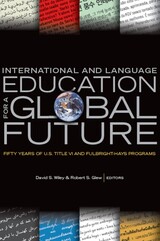 International and Language Education for a Global Future: Fifty Years of U.S. Title VI and Fulbright-Hays Programs
David S. Wiley
Michigan State University Press, 2010 The contributions to this book address the role that the U.S. Department of Education Title VI and Fulbright-Hays programs have played in building the largest and highest quality infrastructure in the world for training in languages and other aspects of foreign area knowledge. The volume celebrates the 50th anniversary of the Title VI and associated Fulbright-Hays programs, which have established more than 150 centers of excellence for modern foreign language and area studies and international business education in more than 60 U.S. universities.
The authors review the history of the programs, including their founding and their cumulative impacts on internationalizing the American university at the graduate and undergraduate levels. They review how programs for foreign research, technology for foreign information access, and undergraduate programs have built the foundations of U.S. language-learning materials for use in college courses and government with improved language-learning pedagogies, erected the most distinguished library holdings on foreign countries, supported in-depth research abroad in virtually every nation, and created capacity to teach more than 200 less commonly taught languages.
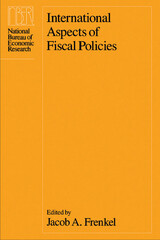 International Aspects of Fiscal Policies
Edited by Jacob A. Frenkel
University of Chicago Press, 1988 This volume brings together nine papers from a conference on international macroeconomics sponsored by the NBER in 1985. International economists as well as graduate students in the fields of global monetary economics, finance, and macroeconomics will find this an outstanding contribution to current research. It includes two commentaries for each paper, written by experts in the field, and Frenkel's detailed introduction, which serves as a reader's guide to the arguments made, the models employed, and the issues raised by each contributor.
The studies analyze national fiscal policies within the context of the international economic order. Malcolm D. Knight and Paul R. Masson use an empirical model to show that fiscal changes in recent years in the United States, West Germany, and Japan have caused major disturbances in net savings and investment flows. Linda S. Kole uses a two-country simulation model to examine the effects of a large nation's expansion on exchange rates, interest rates, and the balance of payments. In other studies, Warwick J. McKibbin and Jeffrey D. Sachs discuss the influences of different currency regimes on the international transmission of inflation; Kent P. Kimbrough analyzes the interaction between optimal tax policies and international trade; Sweder van Wijnbergen investigates the interrelation of fiscal policies, trade intervention, and world interest rates; and Willem H. Buiter uses an analytical model to look at fiscal interdependence and optimal policy design. David Backus, Michael Devereux, and Douglas Purvis develop a theoretical model to investigate effects of different fiscal policies in an open economy. Alan C. Stockman looks at the influence of policy anticipation in the private sector, while Lawrence H. Summers shows the effects of differential tax policy on international competitiveness.
 International Bankruptcy: The Challenge of Insolvency in a Global Economy
Jodie Adams Kirshner
University of Chicago Press, 2018 With the growth of international business and the rise of companies with subsidiaries around the world, the question of where a company should file bankruptcy proceedings has become increasingly complicated. Today, most businesses are likely to have international trading partners, or to operate and hold assets in more than one country. To execute a corporate restructuring or liquidation under several different insolvency regimes at once is an enormous and expensive challenge.
With International Bankruptcy, Jodie Adams Kirshner explores the issues involved in determining which courts should have jurisdiction and which laws should apply in addressing problems within. Kirshner brings together theory with the discussion of specific cases and legal developments to explore this developing area of law. Looking at the key issues that arise in cross-border proceedings, International Bankruptcy offers a guide to this legal environment. In addition, she explores how globalization has encouraged the creation of new legal practices that bypass national legal systems, such as the European Insolvency Framework and the Model Law on Cross-Border Insolvency of the United Nations Commission on International Trade Law. The traditional comparative law framework misses the nuances of these dynamics. Ultimately, Kirshner draws both positive and negative lessons about regulatory coordination in the hope of finding cleaner and more productive paths to wind down or rehabilitate failing international companies.
 International Business Ethics: Challenges and Approaches
Georges Enderle
University of Notre Dame Press, 1999 The dramatic increase of international business since the 1980s has been a highly complex and rather opaque processs, despite the rhetorics both of globalization and the triumphant advance of capitalism. Enormous ethical challenges have come to the fore, which need thoughtful and courageous practical initiatives as well as academic expertise.
International Business Ethics: Challenges and Approaches, edited by Georges Enderle, is a pioneer in this widely uncharted field of international business ethics. This volume includes the work of 39 contributors, half of them from non-Western countries, first presented at the First World Congress of Business, Economics, and Ethics hosted by Reitaku University and the Institute of Moralogy in Japan. Together, their outstanding articles paint an extraordinarily rich and fascinating multidisciplinary picture of international business ethics as it evolves, and delineate the contours of how international business ethics may develop at the turn of the millennium.
Challenges addressed are: the need for a differentiated economic analysis beyond simple profit maximization; the active participation of the world's religions in coping with global issues; information technology in different culture; the roles and responsibilities of transnational corporations; the demand for a new generation of business leaders; and the prospect of East Asia as a major economic region that will considerably shape the next century.
International Business Ethics is for scholars of business, economics, political science, ethics, and international studies, as well as for anyone interested in the growing field of international business ethics.
Georges Enderle is Arthur and Mary O'Neil Professor of International Business Ethics at the University of Notre Dame and Vice President of the International Society of Business, Economics, and Ethics (ISBEE). He is author and editor of numerous books and articles including Region- and Country-related Reports on Business Ethics* (Journal of Business Ethics, 1997) and *Lexikon der Wirtschaftsethik* (1993).
----------
"This book's attempt to ‘paint a … picture of international business ethics as it evolves' is clearly worthy and timely. Recently, for example, the New York Stock Exchange's chairman flew to guerilla-held territory in Colombia to discuss ‘the promise of capitalism' with the insurgency group's leaders--dramatic evidence of the ethical and political implications of global business. These papers by academics and corporate executives from 15 countries (half of them non-Western) would have stimulated valuable discussion and insights at the 1996 conference for which they were prepared.… Many contributors are leading business ethics scholars--Norman Bowie, Richard DeGeorge, and Nobel laureate Amartya Sen, to name the most notable…' --Choice
"Enderle's agenda was to provide an accounting of one meeting, as well as provoke a richer discussion. The book does both quite well. Economists, business persons, philosophers, theologians, Eastern traditions, Western traditions: all take their place in the chapters. The current state of affairs, Enderle would lead us to believe, is one of various discussions among all these actors. Most significantly, the book posits no clear answers, but this panoply of open discussion." --Global Focus
"… this is a book with valuable and interesting specific topics …" --Ethics and Economics
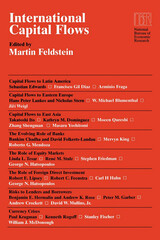 International Capital Flows
Edited by Martin Feldstein
University of Chicago Press, 1999 Recent changes in technology, along with the opening up of many regions previously closed to investment, have led to explosive growth in the international movement of capital. Flows from foreign direct investment and debt and equity financing can bring countries substantial gains by augmenting local savings and by improving technology and incentives. Investing companies acquire market access, lower cost inputs, and opportunities for profitable introductions of production methods in the countries where they invest.
But, as was underscored recently by the economic and financial crises in several Asian countries, capital flows can also bring risks. Although there is no simple explanation of the currency crisis in Asia, it is clear that fixed exchange rates and chronic deficits increased the likelihood of a breakdown. Similarly, during the 1970s, the United States and other industrial countries loaned OPEC surpluses to borrowers in Latin America. But when the U.S. Federal Reserve raised interest rates to control soaring inflation, the result was a widespread debt moratorium in Latin America as many countries throughout the region struggled to pay the high interest on their foreign loans.
International Capital Flows contains recent work by eminent scholars and practitioners on the experience of capital flows to Latin America, Asia, and eastern Europe. These papers discuss the role of banks, equity markets, and foreign direct investment in international capital flows, and the risks that investors and others face with these transactions. By focusing on capital flows' productivity and determinants, and the policy issues they raise, this collection is a valuable resource for economists, policymakers, and financial market participants.
 International Capital Flows in Calm and Turbulent Times: The Need for New International Architecture
Stephany Griffith-Jones, Ricardo Gottschalk, and Jacques Cailloux, Editors
University of Michigan Press, 2003 International Capital Flows in Calm and Turbulent Times analyzes the financial crises of the late 1990s and draws attention to the type of lenders and investors that triggered and deepened the crises. It concentrates on institutional investors and banks and provides detailed analysis of the countries most affected by the 1997-98 Asian financial crisis as well as the Czech Republic and Brazil. It also suggests necessary international financial reforms to make crises less likely.
The book is unique in its scrutiny of the type of lenders and investors that triggered and deepened the crises, focusing particularly on institutional investors and banks; allocation of their assets; the criteria used in this process; and the impact of the nature of the investor on the volatility of different types of capital flow. It addresses such questions as: What determines or triggers massive changes in perceptions and sentiment by different investors and leaders? To what extent does contagion spread not just among countries but between actors? What are the policy implications of this analysis? The book concludes by examining the asymmetries in the financial architecture discussions and implementation and by offering policy proposals.
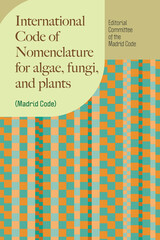 International Code of Nomenclature for algae, fungi, and plants (Madrid Code)
Editorial Committee of the Madrid Code
University of Chicago Press, 2025 The latest, updated edition of the essential, authoritative reference for botanical, mycological, and phycological names.
The International Code of Nomenclature for algae, fungi, and plants, known as “the Code,” is the set of internationally agreed rules and recommendations that govern the naming of these organisms. Scientific naming has deep historical roots. Indeed, the system of naming organisms is one of the first truly global scientific standards. This essential reference originates in Alphonse de Candolle’s 1867 Lois de la nomenclature botanique. This 2025 edition of the Code, the Madrid Code, reflects the decisions made at the Twentieth International Botanical Congress, which met in Madrid, Spain, in July 2024. The congress debated 447 proposals to amend the Code and accepted important new rules, including a mechanism for voluntary registration of plant and algal names, clarifications for naming fossil taxa, the option to reject a new name if it is derogatory to a group of people, and the replacement of an epithet that was considered particularly offensive (revising to afra, afrorum, and afrum).
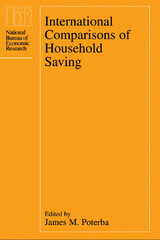 International Comparisons of Household Saving
Edited by James M. Poterba
University of Chicago Press, 1994 Governments and corporations may chip in, but around the world houshold saving is the biggest factor in national saving. To better understand why saving rates differ across countries, this volume provides the most up-to-date analyses of patterns of household saving behavior in Canada, Italy, Japan, Germany, the United Kingdom, and the United States.
Each of the six chapters examines micro data sets of household saving within a particular country and summarizes statistics on patterns of saving by age, income, and other demographic factors. The authors provide age-earning profiles and analyses of the accumulation of wealth over the lifetime in a clear way that allows quick comparisons between earning, consumption, and saving in the six countries.
Designed as a companion to Public Policies and Household Saving (1994), which addresses saving policies in the G-7 nations, this volume offers detailed descriptions of saving behavior in all G-7 nations except France.
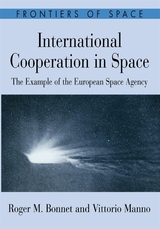 International Cooperation in Space: The Example of the European Space Agency
Roger Bonnet and Vittorio Manno
Harvard University Press, 1994 With the end of the Cold War, will the space race become a cooperative venture? This book, which tells the story of the European Space Agency, shows how such a cooperative enterprise has worked over the past three decades and how it might apply to future space science.
Linking fifteen European nations, the European Space Agency offers a working model of scientific, technological, and political cooperation on an international scale. Roger M. Bonnet and Vittorio Manno give us an insiders’ view of the agency—its beginnings as the European Space Research Organization, its development in the face of early difficulties, and its daily operations. Covering thirty years, this account traces the evolution of ESA’s programs, facilities, and capabilities and the establishment of its scientific, technological, industrial, and political policies and objectives. With an eye to future global space activities, the authors detail ESA’s relationships with its own member states and with other countries, particularly the United States. The history of cooperation between ESA and NASA as exemplified by two specific projects—Ulysses and the international space station—highlights the difficulties of associating different decision-making bodies and political systems.
Illustrated with pictures and diagrams, enlivened with anecdotes involving key world players in space science, this book provides a rich blend of factual information and personal recollection, history and interpretation. A timely contribution to the study of the politics of science and technology, it points the way to future international cooperation.
 International Development Policies: Perspectives for Industrial Countries
Sidney Dell
Duke University Press, 1991 In this survey of the field of international development policies, Sidney Dell challenges conventional wisdom and provides a rationale for a more cooperative and constructive approach to world development. Assessing the management of the global economy by the major economic powers and the policies that caused the world economy to lose momentum in the 1970s and 1980s, Dell directs his study to industrial countries which must, he claims, take responsibility for creating an environment favorable to Third World development.
Tracing the fundamental changes of the last forty years in international development policies toward the Third World, Dell details the transformation from a policy of collective responsibility on the part of the international community to the current status, in which the commitment of governments of industrial countries to Third World development is greatly diluted. He examines the growing conflicts in world trade and analyzes the failure of the international economic community to develop a long-run strategy for dealing with the world debt crisis.
Other topics addressed include the future of the international monetary system, the viability of small countries, strategies for development of basic needs, and the prospects for foreign private investment.
International Dialogues about Visual Culture, Education and Art
Edited by Teresa Eça and Rachel Mason
Intellect Books, 2008 Although art is taught around the world, art education policies and practices vary widely—and the opportunities for teachers to exchange information are few. International Dialogues about Visual Culture, Education, and Art brings together diverse perspectives on teaching art to forge a comprehensive understanding of the challenges facing art educators in every country. This comprehensive, authoritative volume examines global views on education policy, discusses new trends in critical pedagogy, introduces new technologies available to educators, investigates community art projects, and shows how art education can be used for peace activism.
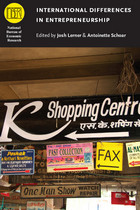 International Differences in Entrepreneurship
Edited by Josh Lerner and Antoinette Schoar
University of Chicago Press, 2010 Often considered one of the major forces behind economic growth and development, the entrepreneurial firm can accelerate the speed of innovation and dissemination of new technologies, thus increasing a country's competitive edge in the global market. As a result, cultivating a strong culture of entrepreneurial thinking has become a primary goal throughout the world. Surprisingly, there has been little systematic research or comparative analysis to show how the growth of entrepreneurship differs among countries in various stages of development. International Differences in Entrepreneurship fills this void by explaining how a country's institutional differences, cultural considerations, and personal characteristics can affect the role that entrepreneurs play in its economy. Developing an understanding of the origins of entrepreneurs as well as the choices they make and the complexity of their activities across countries and industries are of central importance to this volume. In addition, contributors consider how environmental factors of individual economies, such as market regulation, government subsidies for banks, and support for entrepreneurial culture affect the industry and the impact that entrepreneurs have on growth in developing nations.
 International Differences in the Business Practices and Productivity of Firms
Edited by Richard B. Freeman and Kathryn L. Shaw
University of Chicago Press, 2009 In recent years, globalization and the expansion of information technologies have reshaped managerial practices, forcing multinational firms to adjust business practices to different environments and domestic companies to adjust to their foreign competitors. In International Differences in the Business Practices and Productivity of Firms, a distinguished group of contributors examines the phenomenon of widespread differences in managerial practices across firms, establishments within firms, and countries. This volume brings together eight studies that combine qualitative and quantitative insider analysis of business practices such as the use of teams, incentive pay, lean manufacturing, and quality control, revealing the elements that determine which practices are adopted and why. International Differences in the Business Practices and Productivity of Firms offers a much-needed model for measuring the productivity and performance of international firms in a fast-paced global economy.
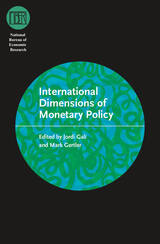 International Dimensions of Monetary Policy
Edited by Jordi Galí and Mark Gertler
University of Chicago Press, 2010 United States monetary policy has traditionally been modeled under the assumption that the domestic economy is immune to international factors and exogenous shocks. Such an assumption is increasingly unrealistic in the age of integrated capital markets, tightened links between national economies, and reduced trading costs. International Dimensions of Monetary Policy brings together fresh research to address the repercussions of the continuing evolution toward globalization for the conduct of monetary policy.
In this comprehensive book, the authors examine the real and potential effects of increased openness and exposure to international economic dynamics from a variety of perspectives. Their findings reveal that central banks continue to influence decisively domestic economic outcomes—even inflation—suggesting that international factors may have a limited role in national performance. International Dimensions of Monetary Policy will lead the way in analyzing monetary policy measures in complex economies.
International Economic Cooperation
Edited by Martin Feldstein
University of Chicago Press, 1988 "A readable, balanced, and provocative view of the prospects for fruitful international economic cooperation. The papers are realistic: each discusses the difficulties involved in reaching cooperative solutions or procedures as well as the benefits of doing so. The discussion among the conference participants is lively, interesting, and insightful."--William H. Branson, Princeton University
International Economic Relations
Commission of Inquiry into National Policy in International Economic Relations
University of Minnesota Press, 1934 International Economic Relations was first published in 1934. Minnesota Archive Editions uses digital technology to make long-unavailable books once again accessible, and are published unaltered from the original University of Minnesota Press editions.
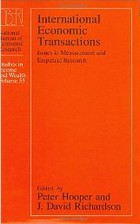 International Economic Transactions: Issues in Measurement and Empirical Research
Edited by Peter Hooper and J. David Richardson
University of Chicago Press, 1991 How the government arrives at its official economic statistics deeply influences the lives of every American. Social Security payments and even some wages are linked to import prices through official inflation rates; special measures of national product are necessary for valid comparisons of vital social indicators such as relative standards of living and relative poverty. Poor information can result in poor policies. And yet, federal statistics agencies have been crippled by serious budget cuts—and more cuts may lie ahead.
Questioning the quality of current data and analytical procedures, this ambitious volume proposes innovative research designs and methods for data enhancement, and offers new data on trade prices and service transactions for future studies. Leading researchers address the measurement of international trade flows and prices, including the debate over measurement of computer prices and national productivity; compare international levels of manufacturing output; and assess the extent to which the United States has fallen into debt to the rest of the world.
 The International Economy and Monetary Movements in France, 1493–1725
Frank C. Spooner
Harvard University Press, 1972 This volume makes available the first English version of L’Économie mondiale et les frappes monétaires en France, 1493–1680, Frank C. Spooner’s original and distinguished contribution to economic and monetary history. Generously illustrated with maps and graphs, and abridged by the author, this study introduces the English-reading audience to the methodological approaches of the modern school of French economic history. In this edition, Spooner covers an additional forty-five years not included in his original work: the period 1680–1725 which marks the prelude to the great monetary reform and consolidation of France in 1726.
In addition to bringing the reader up to date on his continuing research, he presents a number of important conclusions concerning this economic era. Drawing from his vast insight into French monetary history and his thorough technical knowledge of French coinage and minds of the period, the author maps the historical and spatial perspectives of the two and a half centuries when France experienced successive periods of inflation as bullion, copper, and credit emerged into the forefront of economic affairs. To illustrate the way in which the sequence of these periods affected the structure of the French economy, he discusses how the relative supply and demand of the metals used in varying degrees as a medium of exchange increased the demand for the metal and influenced the credit system. Credit thus made a special contribution in coordinating and adjusting the various inconsistencies in the production and circulation of the different metals.
Throughout his study, Spooner attributes an important role to money as a significant factor in economic change and development in early modern Europe and focuses on the relationship between the supply of money and the level and pattern of economic activity.
 International Environmental Policy: From the Twentieth to the Twenty-First Century
Lynton Keith Caldwell
Duke University Press, 1996 In this newly revised and expanded edition of the award-winning International Environmental Policy, Lynton Keith Caldwell updates his comprehensive survey of the global international movement for protection of the environment. Serving as a history of international cooperation on environmental issues, this book focuses primarily on the development of international agreements and institutional arrangements—both governmental and nongovernmental—along with the impact of science, technology, trade, and communication on environmental policy. With implications for multinational commerce, population policy, agriculture, energy issues, biological and cultural diversity, transnational equity, ideology, and education, this book takes a broad view of the policy outcomes of what may be the most important social movement of the 20th century, and addresses the events and politics that have significantly affected the movement over the last twenty years and will continue to affect it into the next century.
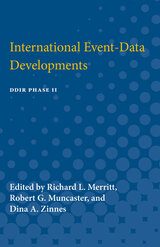 International Event-Data Developments: DDIR Phase II
Edited by Richard L. Merritt, Robert G. Muncaster, and Dina A. Zinnes
University of Michigan Press, 1993 The scientific study of international events has been revolutionized. Writers have long viewed such phenomena as war and peace, conflict and cooperation, as sequences of events—démarches, protests, treaties, crises, armed interventions, conferences, and other occurrences that stand out against the gray background of everyday living. New thinking, however, has given us a more systematic means of analyzing the occurrence of events and of understanding and even predicting the international processes they influence. This book offers insight into the current exploration of a modern and sophisticated analytic and methodological approach to the study of interactions among nation-states, ethnic groups, and other international actors.National Science Foundation support brought together key event-data researchers in Data Development for International Research (DDIR) to assess needs and consider alternative approaches. DDIR has sought to advance the quantitative analysis of international politics. In Phase I it updated, expanded, and developed new national attribute and international conflict data. DDIR Phase II, represented in this book, has two main goals: to systematically enhance and improve currently existing, high-quality event data sets and to develop computer software that can facilitate the future generation of such event data and make data sets more readily accessible to users.
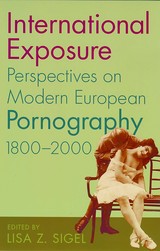 International Exposure: Perspectives on Modern European Pornography, 1800–2000
Sigel, Lisa Z.
Rutgers University Press, 2005 International Exposure demonstrates the wealth of desires woven into the fabric of European history: desires about empire and nation, about self and other, about plenty and dearth. By documenting the diverse meanings of pornography, senior scholars from across disciplines show the ways that sexuality became central to the individual, to the nation, and to the transnational character of modern society.
The ten essays in the volume engage a rich array of topics, including obscenity in the German states, censorship in France’s Third Republic, “she-male” internet porn, the rise of incestuous longings in England, the place of the Hungarian video revolution in the global market, and the politics of pornography in Russia. Taken together, the essays illustrate the latest approaches to content, readership, form, and delivery in modern European pornography.
A substantial discussion of the broad history and state of the field complements the ten in-depth case studies that examine a wide range of sources from literature to magazines, video to the internet. By tackling the highbrow and lowdown of the pornographic form, this volume lays the groundwork for the next surge of studies in the field.
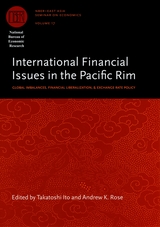 International Financial Issues in the Pacific Rim: Global Imbalances, Financial Liberalization, and Exchange Rate Policy
Edited by Takatoshi Ito and Andrew K. Rose
University of Chicago Press, 2008 The imbalanced, yet mutually beneficial, trading relationship between the United States and Asia has long been one of international finance’s most perplexing mysteries. Although the United States continues to post a substantial trade deficit—and China reaps the benefits of a surplus—the dollar has yet to sink in the face of ever-increasing account disparities. International Financial Issues in the Pacific Rim explains why the United States enjoys a seemingly symbiotic relationship with its trading partners despite stark inequities in the trade balance, especially with Asia. This timely and well-informed study also debunks the assumed link between economic openness and low inflation in the region, identifies the serious gap between academic and private-sector researchers’ understanding of exchange rate volatility, and analyzes the liberalization of Asian capital accounts. International Financial Issues in the Pacific Rim will have broad implications for global trade and economic policy issues in Asia and beyond.
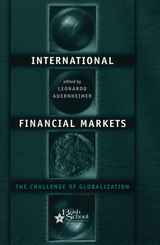 International Financial Markets: The Challenge of Globalization
Edited by Leonardo Auernheimer
University of Chicago Press, 2003 As the globalization of financial markets continues, we urgently need to understand the crises that have plagued these markets and the policies best suited to preventing such crises in the future. In this book, a prominent group of economists and policymakers blend conceptual analysis and policy discussion in seven well-integrated papers, analyzing the nature of capital flows, alternative exchange-rate regimes, and the roles of international financial institutions.
After a guided tour by the editor and a historical exploration, some of the world's leading theorists and policy analysts examine the benefits and pitfalls of capital movements and controls. In the second portion, papers examine the recent experiences of Argentina and Mexico, with Charles Calomiris—whose proposals for a new world financial architecture have elicited wide attention—contributing a response. The volume concludes with a roundtable discussion of the report of the International Financial Institutions Advisory Commission, in which the chair of the commission, Allan H. Meltzer, both comments on the report and responds to questions about it.
The material presented here will become a standard reference for analysts, policymakers, and the interested general public.
Contributors:
Leonardo Auernheimer, Matthew Bishop, Michael D. Bordo, Charles Calomiris, Guillermo A. Calvo, Augustin Carstens, Michael P. Dooley, Pablo E. Guidotti, T. Britton Harris, John P. Lipsky, Guillermo Ortiz Martinez, Allan H. Meltzer, Andrew Powell, Rene Stulz, Carl E. Walsh
 International Handbook on Clinical Tax Education
Edited by Amy Lawton
University of London Press, 2023 A handbook for establishing tax clinics.
Tax clinics, a government-funded initiative to help people who may not be able to afford professional advice and representation with their tax affairs, have existed in the United States since the early 1990s. Now they are being established throughout the world, particularly in Australia, the UK, and Ireland. This practical handbook explores the benefits that a clinical tax education can have and equips readers with the tools needed to start a clinical tax project. It investigates the ways in which tax clinics can both educate and remedy tax positions for local communities in supporting those without access to the tax profession to understand their tax liabilities. It also explores the higher education setting, in which community tax projects rely on students for their success, offering them the benefits of an alternative learning environment in tax and experience in the tax profession while studying. Beyond identifying the practical benefits, this handbook uses learning from tax clinics to uncover the burdens and impacts of tax policy on more marginalized taxpayers, and how policymakers can tailor tax systems to overcome them.
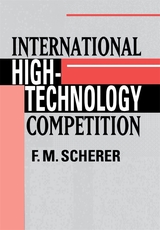 International High-Technology Competition
F. M. Scherer
Harvard University Press, 1992 During the 1970s and 1980s, American manufacturing enterprises saw their technological dominance challenged by increasingly tough competition from abroad. This book investigates business responses to those challenges. On average, F. M. Scherer shows, 308 U.S. companies reacted to rising imports of high-technology products by cutting back research and development expenditures as a percentage of sales. The cutbacks were particularly large in industries protected by voluntary trade restraint agreements and other trade barriers.
Using statistical data and eleven in-depth case studies, Scherer finds that company responses to new high-technology competition from abroad were highly diverse. Aggressive reactions predominated in firms producing color film, wet shavers, medical imaging apparatus, fiber optics, and earth-moving equipment. But the efforts of U.S. manufacturers in other lines such as color television, VCRs, and facsimile machines, were too meager to repel technologically innovative overseas challengers. Exploring why reactions differed so much from case to case, Scherer finds systematic explanations in such variables as the multinationality of enterprises, domestic market structure, links to academic science bases, and the educational background of top managers. He concludes by offering proposals to improve the competitiveness of American high-technology companies.
International Horror Film Directors: Global Fear
Edited by Danny Shipka and Ralph Beliveau
Intellect Books, 2016 Horror films have for decades commanded major global audiences, tapping into deep-rooted fears that cross national and cultural boundaries in their ability to spark terror. This book brings together a group of scholars to explore the ways that this fear is utilized and played upon by a wide range of filmmakers. Contributors take up such major figures as Guillermo del Toro, Lars Von Trier, and David Cronenberg, and they also offer introductions to lesser-known talents such as Richard Franklin, Kiyoshi Kurosawa, Juan López Moctezuma, and Alexandre Aja. Scholars and fans alike dipping into this collection will discover plenty of insight into what chills us.
 International Institutions and Power Politics: Bridging the Divide
Anders Wivel and T.V. Paul, Editors
Georgetown University Press, 2019 This book moves scholarly debates beyond the old question of whether or not international institutions matter in order to examine how they matter, even in a world of power politics. Power politics and international institutions are often studied as two separate domains, but this is in need of rethinking because today most states strategically use institutions to further their interests. Anders Wivel, T.V. Paul, and the international group of contributing authors update our understanding of how institutions are viewed among the major theoretical paradigms in international relations, and they seek to bridge the divides. Empirical chapters examine specific institutions in practice, including the United Nations, International Atomic Energy Agency, and the European Union. The book also points the way to future research. International Institutions and Power Politics provides insights for both international relations theory and practical matters of foreign affairs, and it will be essential reading for all international relations scholars and advanced students.
 The International Jewish Labor Bund after 1945: Toward a Global History
Slucki, David
Rutgers University Press, 2012 The Jewish Labor Bund was one of the major political forces in early twentieth-century Eastern Europe. But the decades after the Second World War were years of enormous difficulty for Bundists. Like millions of other European Jews, they faced the challenge of resurrecting their lives, so gravely disrupted by the Holocaust. Not only had the organization lost many members, but its adherents were also scattered across many continents. In this book, David Slucki charts the efforts of the surviving remnants of the movement to salvage something from the wreckage.
Covering both the Bundists who remained in communist Eastern Europe and those who emigrated to the United States, France, Australia, and Israel, the book explores the common challenges they faced—building transnational networks of friends, family, and fellow Holocaust survivors, while rebuilding a once-local movement under a global umbrella. This is a story of resilience and passion—passion for an idea that only barely survived Auschwitz.
International Journal of American Linguistics, volume 87 number 2 (April 2021)
The University of Chicago Press
University of Chicago Press Journals, 2021 This is volume 87 issue 2 of International Journal of American Linguistics. The International Journal of American Linguistics (IJAL) is dedicated to the documentation and analysis of the indigenous languages of the Americas. Founded by Franz Boas and Pliny Earle Goddard in 1917, the journal focuses on the linguistics of American Indigenous languages. IJAL is an important repository for research based on field work and archival materials on the languages of North and South America.
International Journal of American Linguistics, volume 87 number 3 (July 2021)
The University of Chicago Press
University of Chicago Press Journals, 2021 This is volume 87 issue 3 of International Journal of American Linguistics. The International Journal of American Linguistics (IJAL) is dedicated to the documentation and analysis of the indigenous languages of the Americas. Founded by Franz Boas and Pliny Earle Goddard in 1917, the journal focuses on the linguistics of American Indigenous languages. IJAL is an important repository for research based on field work and archival materials on the languages of North and South America.
International Journal of American Linguistics, volume 87 number 4 (October 2021)
The University of Chicago Press
University of Chicago Press Journals, 2021 This is volume 87 issue 4 of International Journal of American Linguistics. The International Journal of American Linguistics (IJAL) is dedicated to the documentation and analysis of the indigenous languages of the Americas. Founded by Franz Boas and Pliny Earle Goddard in 1917, the journal focuses on the linguistics of American Indigenous languages. IJAL is an important repository for research based on field work and archival materials on the languages of North and South America.
International Journal of American Linguistics, volume 88 number 1 (January 2022)
The University of Chicago Press
University of Chicago Press Journals, 2022 This is volume 88 issue 1 of International Journal of American Linguistics. The International Journal of American Linguistics (IJAL) is dedicated to the documentation and analysis of the indigenous languages of the Americas. Founded by Franz Boas and Pliny Earle Goddard in 1917, the journal focuses on the linguistics of American Indigenous languages. IJAL is an important repository for research based on field work and archival materials on the languages of North and South America.
International Journal of American Linguistics, volume 88 number 2 (April 2022)
The University of Chicago Press
University of Chicago Press Journals, 2022 This is volume 88 issue 2 of International Journal of American Linguistics. The International Journal of American Linguistics (IJAL) is dedicated to the documentation and analysis of the indigenous languages of the Americas. Founded by Franz Boas and Pliny Earle Goddard in 1917, the journal focuses on the linguistics of American Indigenous languages. IJAL is an important repository for research based on field work and archival materials on the languages of North and South America.
International Journal of American Linguistics, volume 88 number 3 (July 2022)
The University of Chicago Press
University of Chicago Press Journals, 2022 This is volume 88 issue 3 of International Journal of American Linguistics. The International Journal of American Linguistics (IJAL) is dedicated to the documentation and analysis of the indigenous languages of the Americas. Founded by Franz Boas and Pliny Earle Goddard in 1917, the journal focuses on the linguistics of American Indigenous languages. IJAL is an important repository for research based on field work and archival materials on the languages of North and South America.
International Journal of American Linguistics, volume 88 number 4 (October 2022)
The University of Chicago Press
University of Chicago Press Journals, 2022 This is volume 88 issue 4 of International Journal of American Linguistics. The International Journal of American Linguistics (IJAL) is dedicated to the documentation and analysis of the indigenous languages of the Americas. Founded by Franz Boas and Pliny Earle Goddard in 1917, the journal focuses on the linguistics of American Indigenous languages. IJAL is an important repository for research based on field work and archival materials on the languages of North and South America.
International Journal of American Linguistics, volume 88 number S1 (April 2022)
The University of Chicago Press
University of Chicago Press Journals, 2022 This is volume 88 issue S1 of International Journal of American Linguistics. The International Journal of American Linguistics (IJAL) is dedicated to the documentation and analysis of the indigenous languages of the Americas. Founded by Franz Boas and Pliny Earle Goddard in 1917, the journal focuses on the linguistics of American Indigenous languages. IJAL is an important repository for research based on field work and archival materials on the languages of North and South America.
International Journal of American Linguistics, volume 89 number 1 (January 2023)
The University of Chicago Press
University of Chicago Press Journals, 2023 This is volume 89 issue 1 of International Journal of American Linguistics. The International Journal of American Linguistics (IJAL) is dedicated to the documentation and analysis of the indigenous languages of the Americas. Founded by Franz Boas and Pliny Earle Goddard in 1917, the journal focuses on the linguistics of American Indigenous languages. IJAL is an important repository for research based on field work and archival materials on the languages of North and South America.
International Journal of American Linguistics, volume 89 number 2 (April 2023)
The University of Chicago Press
University of Chicago Press Journals, 2023 This is volume 89 issue 2 of International Journal of American Linguistics. The International Journal of American Linguistics (IJAL) is dedicated to the documentation and analysis of the indigenous languages of the Americas. Founded by Franz Boas and Pliny Earle Goddard in 1917, the journal focuses on the linguistics of American Indigenous languages. IJAL is an important repository for research based on field work and archival materials on the languages of North and South America.
International Journal of American Linguistics, volume 89 number 3 (July 2023)
The University of Chicago Press
University of Chicago Press Journals, 2023 This is volume 89 issue 3 of International Journal of American Linguistics. The International Journal of American Linguistics (IJAL) is dedicated to the documentation and analysis of the indigenous languages of the Americas. Founded by Franz Boas and Pliny Earle Goddard in 1917, the journal focuses on the linguistics of American Indigenous languages. IJAL is an important repository for research based on field work and archival materials on the languages of North and South America.
International Journal of American Linguistics, volume 89 number 4 (October 2023)
The University of Chicago Press
University of Chicago Press Journals, 2023 This is volume 89 issue 4 of International Journal of American Linguistics. The International Journal of American Linguistics (IJAL) is dedicated to the documentation and analysis of the indigenous languages of the Americas. Founded by Franz Boas and Pliny Earle Goddard in 1917, the journal focuses on the linguistics of American Indigenous languages. IJAL is an important repository for research based on field work and archival materials on the languages of North and South America.
International Journal of American Linguistics, volume 90 number 1 (January 2024)
The University of Chicago Press
University of Chicago Press Journals, 2024 This is volume 90 issue 1 of International Journal of American Linguistics. The International Journal of American Linguistics (IJAL) is dedicated to the documentation and analysis of the indigenous languages of the Americas. Founded by Franz Boas and Pliny Earle Goddard in 1917, the journal focuses on the linguistics of American Indigenous languages. IJAL is an important repository for research based on field work and archival materials on the languages of North and South America.
International Journal of American Linguistics, volume 90 number 2 (April 2024)
The University of Chicago Press
University of Chicago Press Journals, 2024 This is volume 90 issue 2 of International Journal of American Linguistics. The International Journal of American Linguistics (IJAL) is dedicated to the documentation and analysis of the indigenous languages of the Americas. Founded by Franz Boas and Pliny Earle Goddard in 1917, the journal focuses on the linguistics of American Indigenous languages. IJAL is an important repository for research based on field work and archival materials on the languages of North and South America.
International Journal of American Linguistics, volume 90 number 3 (July 2024)
The University of Chicago Press
University of Chicago Press Journals, 2024 This is volume 90 issue 3 of International Journal of American Linguistics. The International Journal of American Linguistics (IJAL) is dedicated to the documentation and analysis of the indigenous languages of the Americas. Founded by Franz Boas and Pliny Earle Goddard in 1917, the journal focuses on the linguistics of American Indigenous languages. IJAL is an important repository for research based on field work and archival materials on the languages of North and South America.
International Journal of American Linguistics, volume 90 number 4 (October 2024)
The University of Chicago Press
University of Chicago Press Journals, 2024 This is volume 90 issue 4 of International Journal of American Linguistics. The International Journal of American Linguistics (IJAL) is dedicated to the documentation and analysis of the indigenous languages of the Americas. Founded by Franz Boas and Pliny Earle Goddard in 1917, the journal focuses on the linguistics of American Indigenous languages. IJAL is an important repository for research based on field work and archival materials on the languages of North and South America.
International Journal of American Linguistics, volume 90 number S1 (April 2024)
The University of Chicago Press
University of Chicago Press Journals, 2024 This is volume 90 issue S1 of International Journal of American Linguistics. The International Journal of American Linguistics (IJAL) is dedicated to the documentation and analysis of the indigenous languages of the Americas. Founded by Franz Boas and Pliny Earle Goddard in 1917, the journal focuses on the linguistics of American Indigenous languages. IJAL is an important repository for research based on field work and archival materials on the languages of North and South America.
International Journal of American Linguistics, volume 91 number 1 (January 2025)
The University of Chicago Press
University of Chicago Press Journals, 2025 This is volume 91 issue 1 of International Journal of American Linguistics. The International Journal of American Linguistics (IJAL) is dedicated to the documentation and analysis of the indigenous languages of the Americas. Founded by Franz Boas and Pliny Earle Goddard in 1917, the journal focuses on the linguistics of American Indigenous languages. IJAL is an important repository for research based on field work and archival materials on the languages of North and South America.
International Journal of American Linguistics, volume 91 number 2 (April 2025)
The University of Chicago Press
University of Chicago Press Journals, 2025 This is volume 91 issue 2 of International Journal of American Linguistics. The International Journal of American Linguistics (IJAL) is dedicated to the documentation and analysis of the indigenous languages of the Americas. Founded by Franz Boas and Pliny Earle Goddard in 1917, the journal focuses on the linguistics of American Indigenous languages. IJAL is an important repository for research based on field work and archival materials on the languages of North and South America.
International Journal of American Linguistics, volume 91 number 3 (July 2025)
The University of Chicago Press
University of Chicago Press Journals, 2025 This is volume 91 issue 3 of International Journal of American Linguistics. The International Journal of American Linguistics (IJAL) is dedicated to the documentation and analysis of the indigenous languages of the Americas. Founded by Franz Boas and Pliny Earle Goddard in 1917, the journal focuses on the linguistics of American Indigenous languages. IJAL is an important repository for research based on field work and archival materials on the languages of North and South America.
International Journal of American Linguistics, volume 91 number 4 (October 2025)
The University of Chicago Press
University of Chicago Press Journals, 2025 This is volume 91 issue 4 of International Journal of American Linguistics. The International Journal of American Linguistics (IJAL) is dedicated to the documentation and analysis of the indigenous languages of the Americas. Founded by Franz Boas and Pliny Earle Goddard in 1917, the journal focuses on the linguistics of American Indigenous languages. IJAL is an important repository for research based on field work and archival materials on the languages of North and South America.
International Journal of American Linguistics, volume 91 number S1 (April 2025)
The University of Chicago Press
University of Chicago Press Journals, 2025 This is volume 91 issue S1 of International Journal of American Linguistics. The International Journal of American Linguistics (IJAL) is dedicated to the documentation and analysis of the indigenous languages of the Americas. Founded by Franz Boas and Pliny Earle Goddard in 1917, the journal focuses on the linguistics of American Indigenous languages. IJAL is an important repository for research based on field work and archival materials on the languages of North and South America.
International Journal of Plant Sciences, volume 183 number 9 (November/December 2022)
The University of Chicago Press
University of Chicago Press Journals, 2022 This is volume 183 issue 9 of International Journal of Plant Sciences. Since 1875, the International Journal of Plant Sciences (IJPS) has presented high-quality, original, peer-reviewed research from laboratories around the world and in all areas of the plant sciences. Topics covered include genetics and genomics, developmental and cell biology, biochemistry and physiology, morphology and anatomy, systematics, evolution, paleobotany, plant-microbe interactions, and ecology. IJPS welcomes research articles that describe novel results and new perspectives on topics of interest to the international community of plant scientists. The journal also features reviews and special issues in growing areas of the field.
International Journal of Plant Sciences, volume 184 number 1 (January 2023)
The University of Chicago Press
University of Chicago Press Journals, 2023 This is volume 184 issue 1 of International Journal of Plant Sciences. Since 1875, the International Journal of Plant Sciences (IJPS) has presented high-quality, original, peer-reviewed research from laboratories around the world and in all areas of the plant sciences. Topics covered include genetics and genomics, developmental and cell biology, biochemistry and physiology, morphology and anatomy, systematics, evolution, paleobotany, plant-microbe interactions, and ecology. IJPS welcomes research articles that describe novel results and new perspectives on topics of interest to the international community of plant scientists. The journal also features reviews and special issues in growing areas of the field.
International Journal of Plant Sciences, volume 184 number 2 (February 2023)
The University of Chicago Press
University of Chicago Press Journals, 2023 This is volume 184 issue 2 of International Journal of Plant Sciences. Since 1875, the International Journal of Plant Sciences (IJPS) has presented high-quality, original, peer-reviewed research from laboratories around the world and in all areas of the plant sciences. Topics covered include genetics and genomics, developmental and cell biology, biochemistry and physiology, morphology and anatomy, systematics, evolution, paleobotany, plant-microbe interactions, and ecology. IJPS welcomes research articles that describe novel results and new perspectives on topics of interest to the international community of plant scientists. The journal also features reviews and special issues in growing areas of the field.
International Journal of Plant Sciences, volume 184 number 3 (March/April 2023)
The University of Chicago Press
University of Chicago Press Journals, 2023 This is volume 184 issue 3 of International Journal of Plant Sciences. Since 1875, the International Journal of Plant Sciences (IJPS) has presented high-quality, original, peer-reviewed research from laboratories around the world and in all areas of the plant sciences. Topics covered include genetics and genomics, developmental and cell biology, biochemistry and physiology, morphology and anatomy, systematics, evolution, paleobotany, plant-microbe interactions, and ecology. IJPS welcomes research articles that describe novel results and new perspectives on topics of interest to the international community of plant scientists. The journal also features reviews and special issues in growing areas of the field.
International Journal of Plant Sciences, volume 184 number 4 (May 2023)
The University of Chicago Press
University of Chicago Press Journals, 2023 This is volume 184 issue 4 of International Journal of Plant Sciences. Since 1875, the International Journal of Plant Sciences (IJPS) has presented high-quality, original, peer-reviewed research from laboratories around the world and in all areas of the plant sciences. Topics covered include genetics and genomics, developmental and cell biology, biochemistry and physiology, morphology and anatomy, systematics, evolution, paleobotany, plant-microbe interactions, and ecology. IJPS welcomes research articles that describe novel results and new perspectives on topics of interest to the international community of plant scientists. The journal also features reviews and special issues in growing areas of the field.
International Journal of Plant Sciences, volume 184 number 5 (June 2023)
The University of Chicago Press
University of Chicago Press Journals, 2023 This is volume 184 issue 5 of International Journal of Plant Sciences. Since 1875, the International Journal of Plant Sciences (IJPS) has presented high-quality, original, peer-reviewed research from laboratories around the world and in all areas of the plant sciences. Topics covered include genetics and genomics, developmental and cell biology, biochemistry and physiology, morphology and anatomy, systematics, evolution, paleobotany, plant-microbe interactions, and ecology. IJPS welcomes research articles that describe novel results and new perspectives on topics of interest to the international community of plant scientists. The journal also features reviews and special issues in growing areas of the field.
International Journal of Plant Sciences, volume 184 number 7 (September 2023)
The University of Chicago Press
University of Chicago Press Journals, 2023 This is volume 184 issue 7 of International Journal of Plant Sciences. Since 1875, the International Journal of Plant Sciences (IJPS) has presented high-quality, original, peer-reviewed research from laboratories around the world and in all areas of the plant sciences. Topics covered include genetics and genomics, developmental and cell biology, biochemistry and physiology, morphology and anatomy, systematics, evolution, paleobotany, plant-microbe interactions, and ecology. IJPS welcomes research articles that describe novel results and new perspectives on topics of interest to the international community of plant scientists. The journal also features reviews and special issues in growing areas of the field.
International Journal of Plant Sciences, volume 184 number 8 (October 2023)
The University of Chicago Press
University of Chicago Press Journals, 2023 This is volume 184 issue 8 of International Journal of Plant Sciences. Since 1875, the International Journal of Plant Sciences (IJPS) has presented high-quality, original, peer-reviewed research from laboratories around the world and in all areas of the plant sciences. Topics covered include genetics and genomics, developmental and cell biology, biochemistry and physiology, morphology and anatomy, systematics, evolution, paleobotany, plant-microbe interactions, and ecology. IJPS welcomes research articles that describe novel results and new perspectives on topics of interest to the international community of plant scientists. The journal also features reviews and special issues in growing areas of the field.
International Journal of Plant Sciences, volume 184 number 9 (November/December 2023)
The University of Chicago Press
University of Chicago Press Journals, 2023 This is volume 184 issue 9 of International Journal of Plant Sciences. Since 1875, the International Journal of Plant Sciences (IJPS) has presented high-quality, original, peer-reviewed research from laboratories around the world and in all areas of the plant sciences. Topics covered include genetics and genomics, developmental and cell biology, biochemistry and physiology, morphology and anatomy, systematics, evolution, paleobotany, plant-microbe interactions, and ecology. IJPS welcomes research articles that describe novel results and new perspectives on topics of interest to the international community of plant scientists. The journal also features reviews and special issues in growing areas of the field.
International Journal of Plant Sciences, volume 185 number 1 (January 2024)
The University of Chicago Press
University of Chicago Press Journals, 2024 This is volume 185 issue 1 of International Journal of Plant Sciences. Since 1875, the International Journal of Plant Sciences (IJPS) has presented high-quality, original, peer-reviewed research from laboratories around the world and in all areas of the plant sciences. Topics covered include genetics and genomics, developmental and cell biology, biochemistry and physiology, morphology and anatomy, systematics, evolution, paleobotany, plant-microbe interactions, and ecology. IJPS welcomes research articles that describe novel results and new perspectives on topics of interest to the international community of plant scientists. The journal also features reviews and special issues in growing areas of the field.
International Journal of Plant Sciences, volume 185 number 2 (March/April 2024)
The University of Chicago Press
University of Chicago Press Journals, 2024 This is volume 185 issue 2 of International Journal of Plant Sciences. Since 1875, the International Journal of Plant Sciences (IJPS) has presented high-quality, original, peer-reviewed research from laboratories around the world and in all areas of the plant sciences. Topics covered include genetics and genomics, developmental and cell biology, biochemistry and physiology, morphology and anatomy, systematics, evolution, paleobotany, plant-microbe interactions, and ecology. IJPS welcomes research articles that describe novel results and new perspectives on topics of interest to the international community of plant scientists. The journal also features reviews and special issues in growing areas of the field.
International Journal of Plant Sciences, volume 185 number 3 (May 2024)
The University of Chicago Press
University of Chicago Press Journals, 2024 This is volume 185 issue 3 of International Journal of Plant Sciences. Since 1875, the International Journal of Plant Sciences (IJPS) has presented high-quality, original, peer-reviewed research from laboratories around the world and in all areas of the plant sciences. Topics covered include genetics and genomics, developmental and cell biology, biochemistry and physiology, morphology and anatomy, systematics, evolution, paleobotany, plant-microbe interactions, and ecology. IJPS welcomes research articles that describe novel results and new perspectives on topics of interest to the international community of plant scientists. The journal also features reviews and special issues in growing areas of the field.
International Journal of Plant Sciences, volume 185 number 4 (July/August 2024)
The University of Chicago Press
University of Chicago Press Journals, 2024 This is volume 185 issue 4 of International Journal of Plant Sciences. Since 1875, the International Journal of Plant Sciences (IJPS) has presented high-quality, original, peer-reviewed research from laboratories around the world and in all areas of the plant sciences. Topics covered include genetics and genomics, developmental and cell biology, biochemistry and physiology, morphology and anatomy, systematics, evolution, paleobotany, plant-microbe interactions, and ecology. IJPS welcomes research articles that describe novel results and new perspectives on topics of interest to the international community of plant scientists. The journal also features reviews and special issues in growing areas of the field.
International Journal of Plant Sciences, volume 185 number 5 (September 2024)
The University of Chicago Press
University of Chicago Press Journals, 2024 This is volume 185 issue 5 of International Journal of Plant Sciences. Since 1875, the International Journal of Plant Sciences (IJPS) has presented high-quality, original, peer-reviewed research from laboratories around the world and in all areas of the plant sciences. Topics covered include genetics and genomics, developmental and cell biology, biochemistry and physiology, morphology and anatomy, systematics, evolution, paleobotany, plant-microbe interactions, and ecology. IJPS welcomes research articles that describe novel results and new perspectives on topics of interest to the international community of plant scientists. The journal also features reviews and special issues in growing areas of the field.
International Journal of Plant Sciences, volume 185 number 6 (November/December 2024)
The University of Chicago Press
University of Chicago Press Journals, 2024 This is volume 185 issue 6 of International Journal of Plant Sciences. Since 1875, the International Journal of Plant Sciences (IJPS) has presented high-quality, original, peer-reviewed research from laboratories around the world and in all areas of the plant sciences. Topics covered include genetics and genomics, developmental and cell biology, biochemistry and physiology, morphology and anatomy, systematics, evolution, paleobotany, plant-microbe interactions, and ecology. IJPS welcomes research articles that describe novel results and new perspectives on topics of interest to the international community of plant scientists. The journal also features reviews and special issues in growing areas of the field.
International Journal of Plant Sciences, volume 186 number 1 (January 2025)
The University of Chicago Press
University of Chicago Press Journals, 2025 This is volume 186 issue 1 of International Journal of Plant Sciences. Since 1875, the International Journal of Plant Sciences (IJPS) has presented high-quality, original, peer-reviewed research from laboratories around the world and in all areas of the plant sciences. Topics covered include genetics and genomics, developmental and cell biology, biochemistry and physiology, morphology and anatomy, systematics, evolution, paleobotany, plant-microbe interactions, and ecology. IJPS welcomes research articles that describe novel results and new perspectives on topics of interest to the international community of plant scientists. The journal also features reviews and special issues in growing areas of the field.
International Journal of Plant Sciences, volume 186 number 2 (March/April 2025)
The University of Chicago Press
University of Chicago Press Journals, 2025 This is volume 186 issue 2 of International Journal of Plant Sciences. Since 1875, the International Journal of Plant Sciences (IJPS) has presented high-quality, original, peer-reviewed research from laboratories around the world and in all areas of the plant sciences. Topics covered include genetics and genomics, developmental and cell biology, biochemistry and physiology, morphology and anatomy, systematics, evolution, paleobotany, plant-microbe interactions, and ecology. IJPS welcomes research articles that describe novel results and new perspectives on topics of interest to the international community of plant scientists. The journal also features reviews and special issues in growing areas of the field.
International Journal of Plant Sciences, volume 186 number 3 (May 2025)
The University of Chicago Press
University of Chicago Press Journals, 2025 This is volume 186 issue 3 of International Journal of Plant Sciences. Since 1875, the International Journal of Plant Sciences (IJPS) has presented high-quality, original, peer-reviewed research from laboratories around the world and in all areas of the plant sciences. Topics covered include genetics and genomics, developmental and cell biology, biochemistry and physiology, morphology and anatomy, systematics, evolution, paleobotany, plant-microbe interactions, and ecology. IJPS welcomes research articles that describe novel results and new perspectives on topics of interest to the international community of plant scientists. The journal also features reviews and special issues in growing areas of the field.
International Journal of Plant Sciences, volume 186 number 5 (September 2025)
The University of Chicago Press
University of Chicago Press Journals, 2025 This is volume 186 issue 5 of International Journal of Plant Sciences. Since 1875, the International Journal of Plant Sciences (IJPS) has presented high-quality, original, peer-reviewed research from laboratories around the world and in all areas of the plant sciences. Topics covered include genetics and genomics, developmental and cell biology, biochemistry and physiology, morphology and anatomy, systematics, evolution, paleobotany, plant-microbe interactions, and ecology. IJPS welcomes research articles that describe novel results and new perspectives on topics of interest to the international community of plant scientists. The journal also features reviews and special issues in growing areas of the field.
International Law, Sustainable Development and Water Management
Antoinette Hildering
Eburon Academic Publishers, 2005 Water covers about three-fourths of the earth's surface. Still, over one billion people do not have access to clean drinking water—a problem that many governments across the globe seem unable to redress. International Law, Sustainable Development and Water Management explores the political issues inherent in global water management, analysing water as a social, economic, and ecological good, and then applying the principles of international law to resource development policies. Antoinette Hildering's proposed framework for change, "Guardianship Over Water," offers policymakers practical guidelines for water management at a local, national, and international level.
|
|